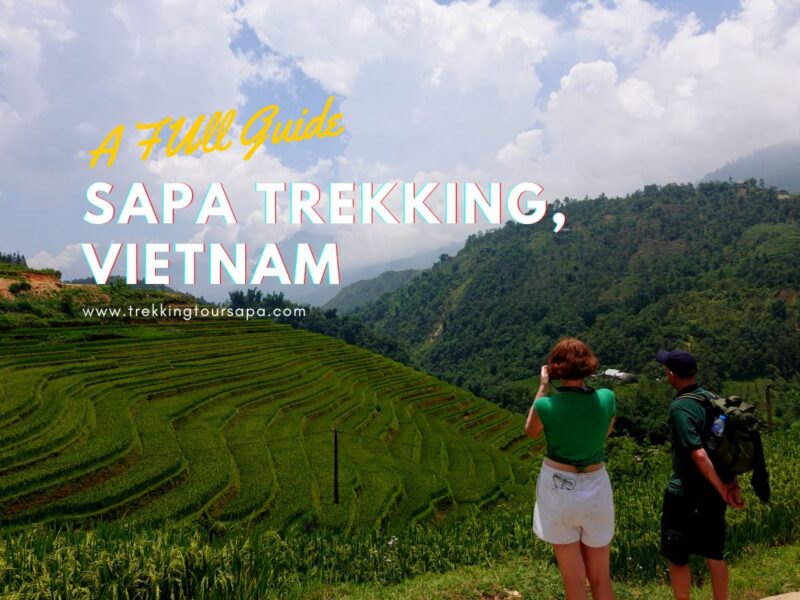If you are a lover of adventurous trips and would like to immerse yourself in unspoiled nature, you must have heard of trekking once. So, what is trekking, and why is Sapa trekking in Vietnam so popular nowadays? And, which are the special things of Sapa hiking? Let’s read more information mentioned below! 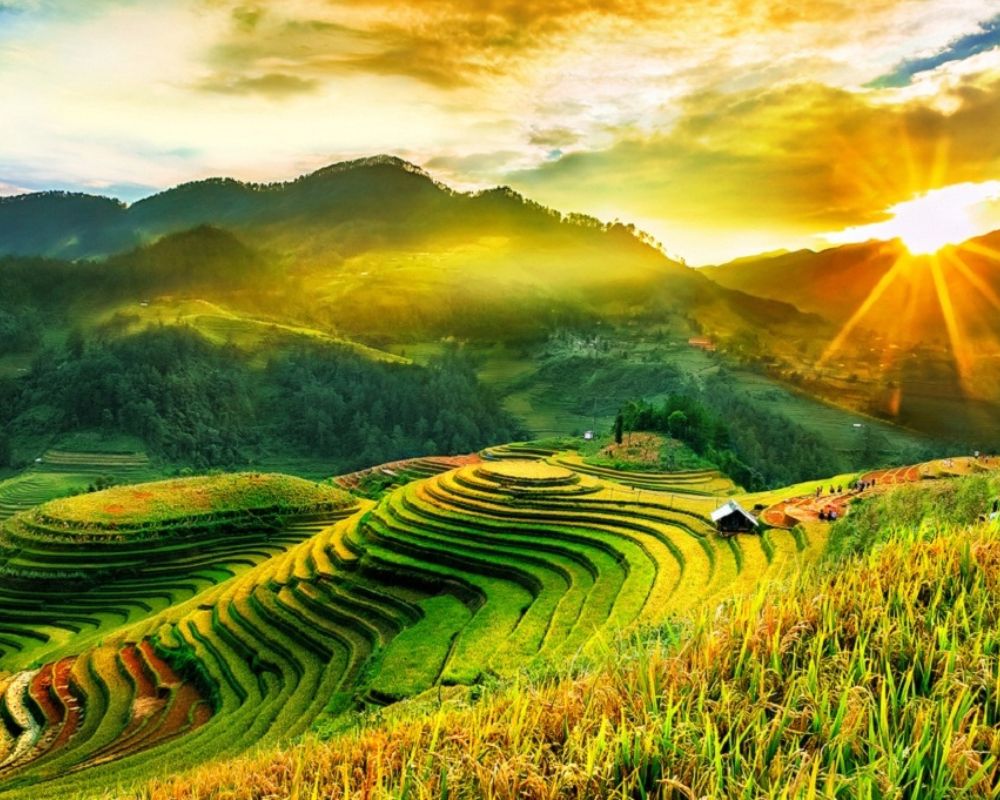 Source: Internet
Source: Internet
Table of Contents
ToggleWhat is trekking?
Trekking is a type of tourism in the form of hiking to explore the wild and visit nature, combining picnic tourism, adventure sports tourism, camping…
Magical charm from Sapa trekking.
Players often choose trekking activities in areas with rugged terrain, hills, national parks, unspoiled forests and little-known people. Trekking in Sapa is an outdoor travel activity where walkers (also known as trekkers) have multi-day hikes/ hiking trips, crossing roads with all kinds of terrain to reach the destinations of remote areas, mostly hilly areas, where there is much interaction with the natural world. Those who love trekking often find unknown areas, or segregated areas with people. Unlike traditional travelers who often go to beautiful places to take pictures to check-in, trekking people often go to explore and find new places. They can go trekking in Sapa anywhere depending on their preferences, from remote villages of Vietnam such as Sapa trekking to overseas. 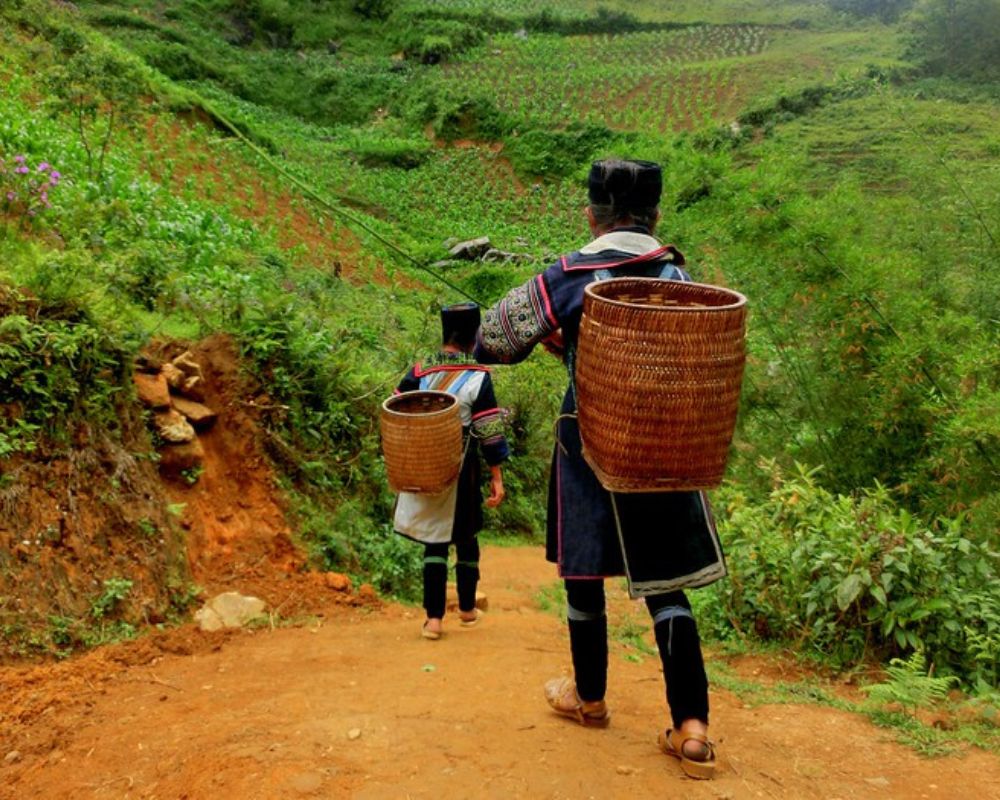
Source: Internet
Differing with the usual types of tourism, trekking has only one means of transportation, which is trekkers’ feet, along with going to remote mountainous places that are rugged and heavily influenced by natural conditions such as topography and weather. Therefore, this is a relatively adventurous type of tourism and is not suitable for everyone.
The length of each trekking trip is long or short decided by the participants, which can range from a few days and sometimes up to a whole year. The adventurous level of the trip also depends on many factors including the careful preparation of the participants. Most trekkers often have to use maps and navigation skills to find their way, must have a first aid kit and certain survival skills to be ready for the trip. Most of them have to carry their own luggage and walk long distances for many days, so it requires participants having a stable health condition to be able to challenge themselves.
Sapa trekking or trekking in Sapa – a unique and memorable travel journey
Trekker (walker) is a nickname used for trekking enthusiasts. Professional trekkers often have long trips, by their experiences they overcome many different terrains and challenges to satisfy their passion. If you are the type of person who loves adventure, nature exploration but always wants safety within the allowable threshold, Sapa trekking Vietnam is highly recommended!
Trekking is quite popular with many people is because of giving participants a feeling of complete freedom. In Vietnam, trekking in Sapa is the popular choice by most people who love taking an adventurous trip.
How to go to Sapa? By bus or by train?
From Hanoi, tourists can choose 2 popular ways to travel to Sapa town, by bus or by train. In order to help travelers have a more objective view, below is some main points compares for these two ways of moving:
Going to Sapa from Hanoi by train: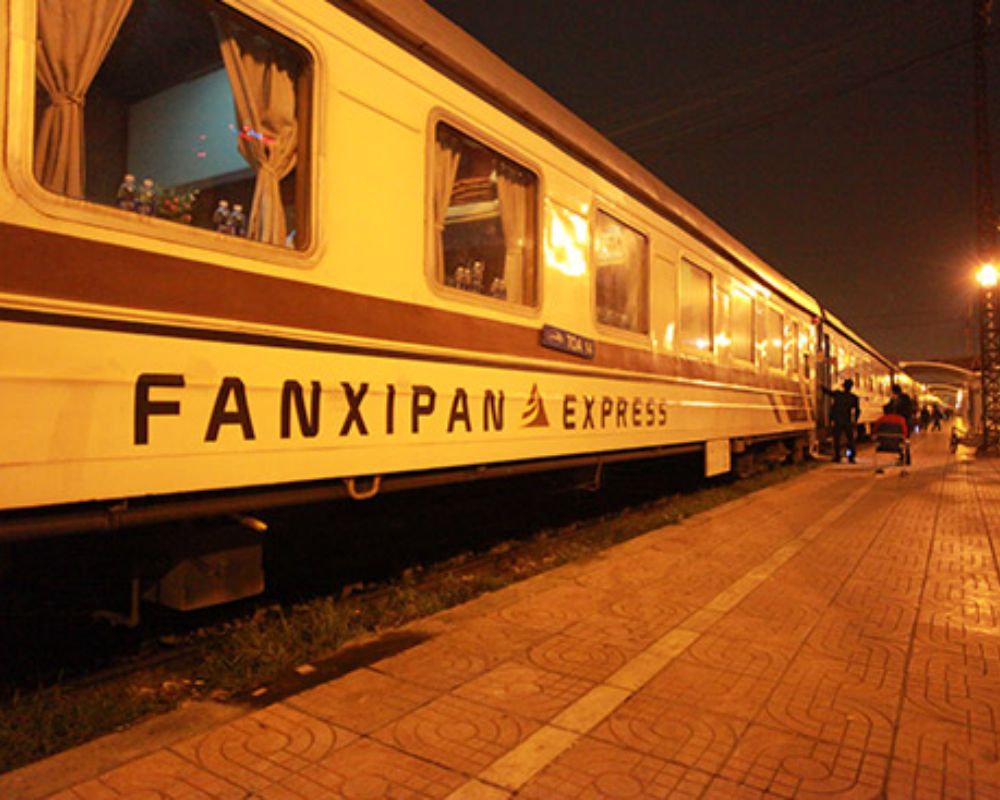
Source: Internet
- Train tickets will be higher than cost’s buses.
- Train environment is quite clean, quiet and good service.
- Tourists can choose from a comfortable chair or bed.
- Comfortable space, spacious enough.
- The sound of railway tracks will sometimes wake people up at night.
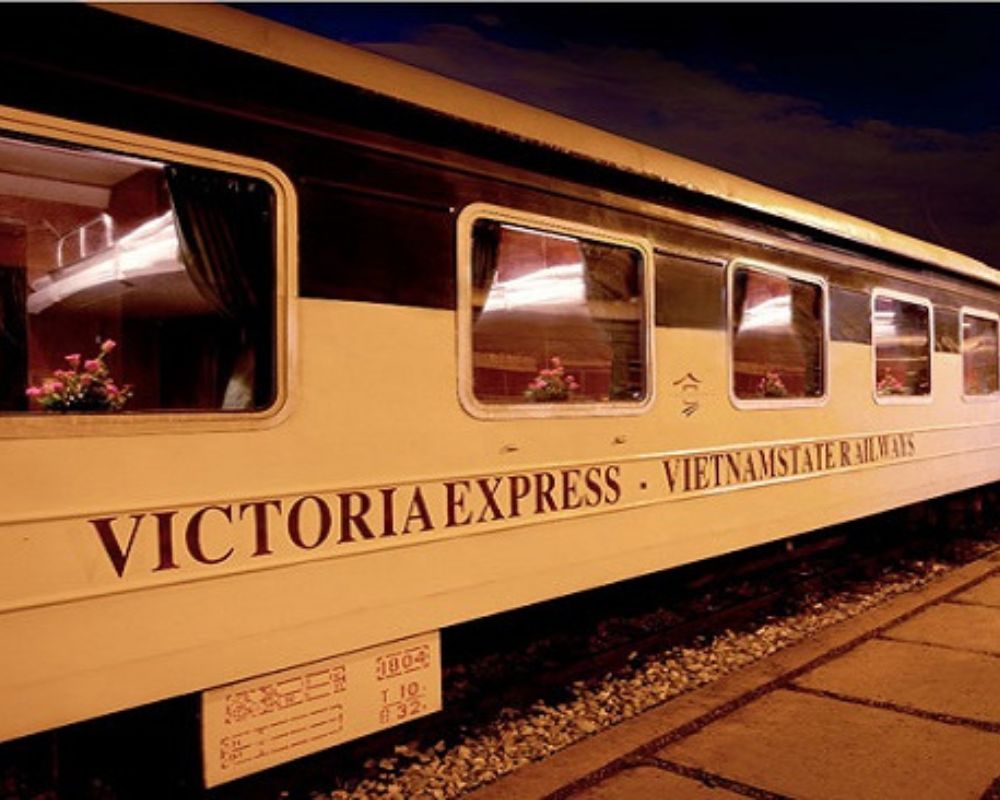
Source: Internet
- After arriving at Lao Cai station, travelers have to take a bus to reach Sapa town.
- Restrooms in trains.
- Travel time from Hanoi to Sapa Vietnam is about 7-9 hours.
Getting Sapa from Hanoi by bus: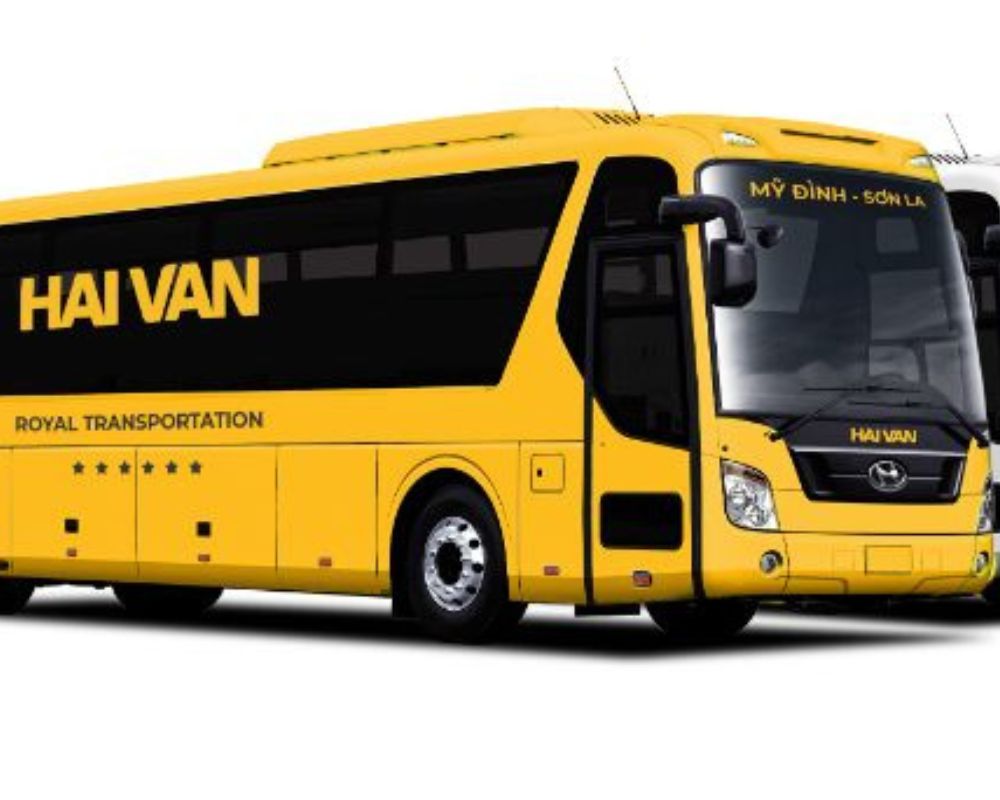
Source: Internet
- Bus tickets are much cheaper than trains.
- Travelers can choose between a seat or a sleeper car.
- However, tourists will not be able to lie down comfortably. Therefore, it will be harder to sleep when traveling by bus or coach.
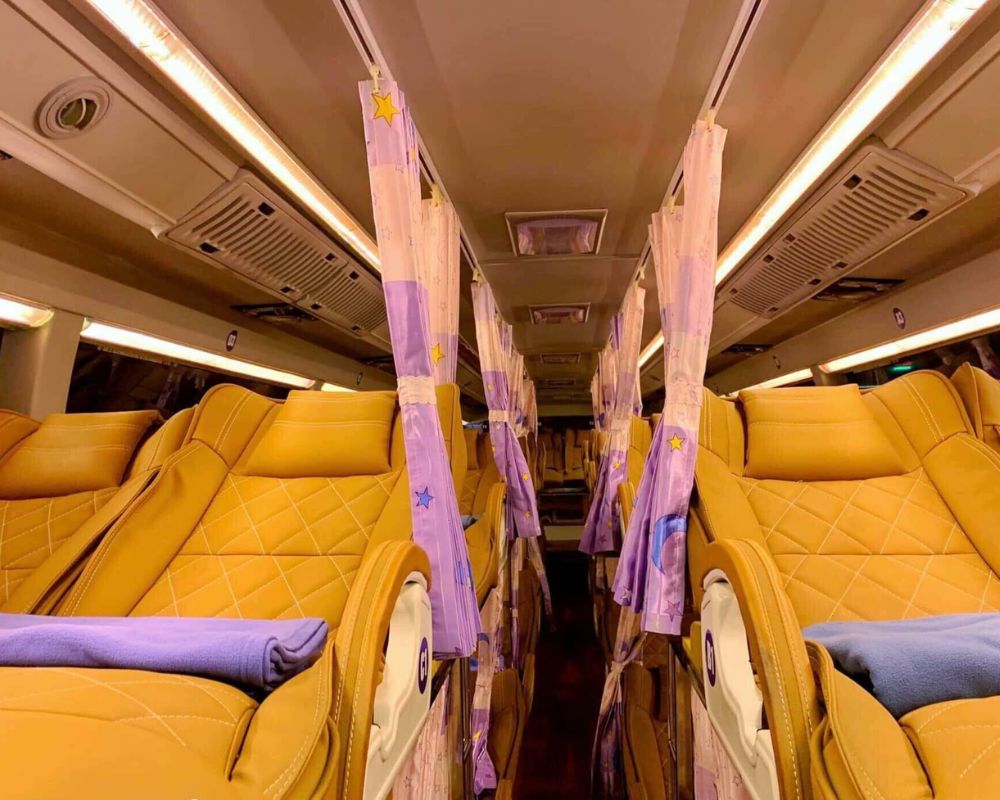
Source: Internet
- No restrooms (Bus will stop at rest stops along the way)
- Travel time only takes about 5-6 hours
It is up to you to choose one of them for traveling from Hanoi to Sapa. If you need to book tickets, please check it here for your best choice.
What is a trekking route?
Sapa trekking routes are trails, areas reserved for trekking people. In Vietnam, there are many beautiful trekking routes for trekkers when this tourism type is increasingly popular.
Which are the best of Sapa trekking routes or Sapa trails?
Sapa is not only a famous tourist destination inside, but also outside of Vietnam. Sapa is a familiar trekking route for many young people in the northernmost part of the country. Sapa is the capital of high mountains, rugged terrain and amazing scenery. Not only can travelers explore the majestic Northwest mountains, but they can also admire the terraced fields or poetic waterfalls. At the end of the journey, trekkers can also visit the villages, immerse themselves in life, and learn about the cultural beauty here.
More specifically, trekkers can join trekking tours around Sapa Vietnam to admire the scenery. Coming to areas with pristine, wild beauty that have not been affected by tourism can help them unwind from their worries in life. 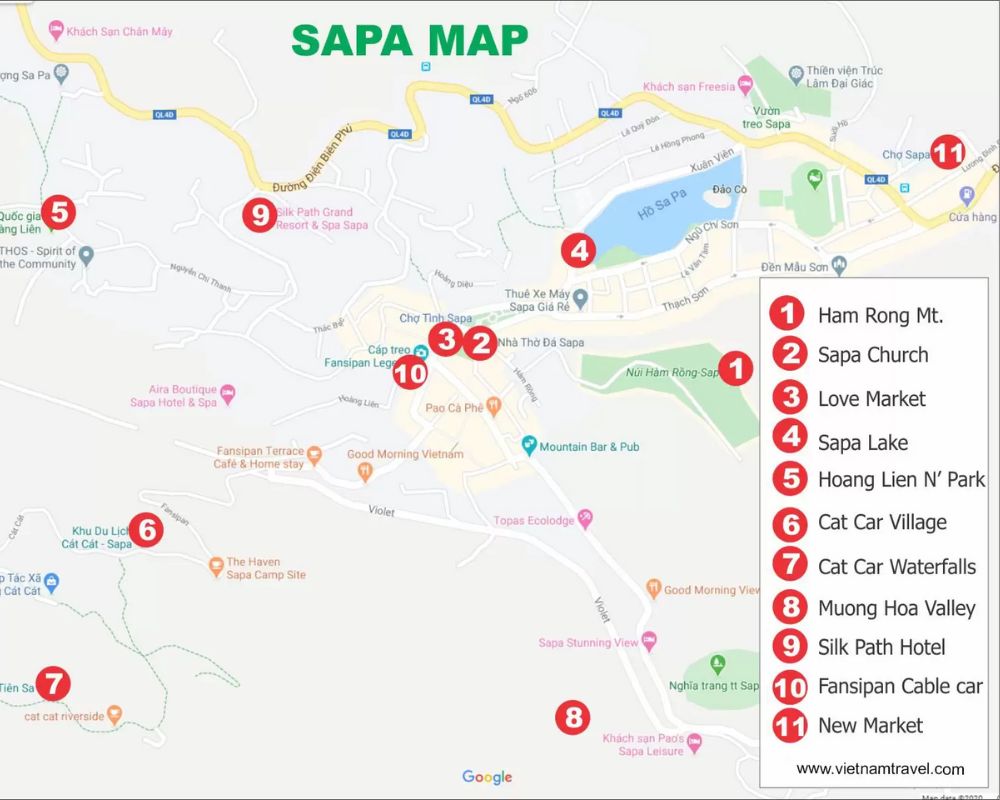
Source: Internet
In more detail, Sapa is also home to many ethnic groups in Vietnam. During the journey, trekkers can discover the customs, life, culture of the indigenous people and of course, delicious local dishes. As mentioned above, trekking is increasingly popular with many different choices. Here are the famous trekking places in Sapa for young people who love to travel, explore and experience. Some outstanding places for their trekking journey to have the most interesting experiences such as Lao Chai – Ta Van, Ta Phin, Cat Cat – Y Linh Ho, Love Waterfall, Muong Hoa Valley,…
By doing this, trekkers may take a Sapa travel guide, Sapa original trek or Sapa tour to get more experiences of Sapa trails. If you need more information about Sapa tour, Sapa travel guide, or Sapa original trek, please check it now!
Sapa 1 Day Tours
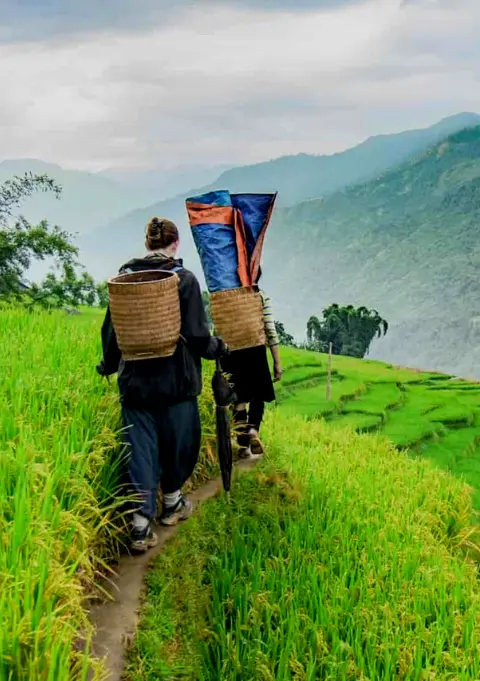
- 1 day experience
- Moderate to challenging
- Cultural immersion & active adventure
- Rice fields, valleys & villages
- Private tours
- Vegan-friendly
Sapa 2 Day Tours
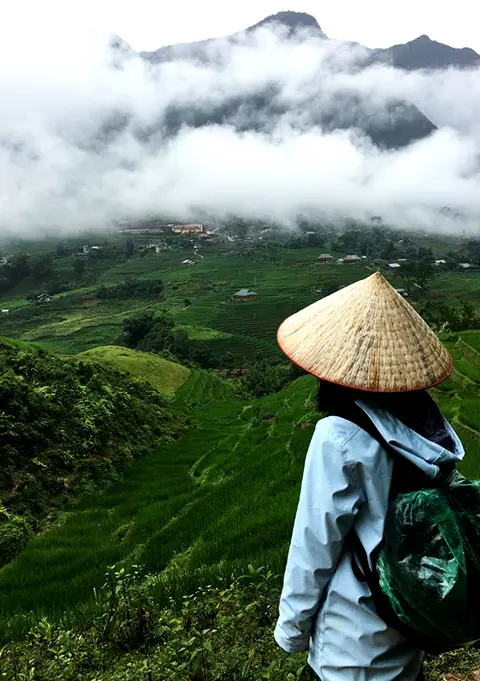
- 2 days 1 night experience
- Moderate to challenging
- Cultural immersion & active adventure
- Mountains, valleys, rice fields and villages
- Private tours
- Vegan-friendly
Sapa 3 Day Tours
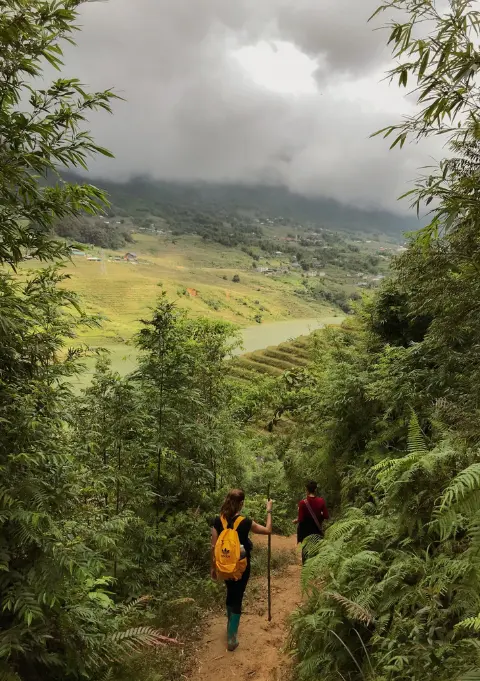
- 3 days 2 night experience
- Moderate to challenging
- Cultural immersion & active adventure
- Mountains, valley, rice fields & villages
- Private tours
- Vegan-friendly
Sapa 4 Day Tours
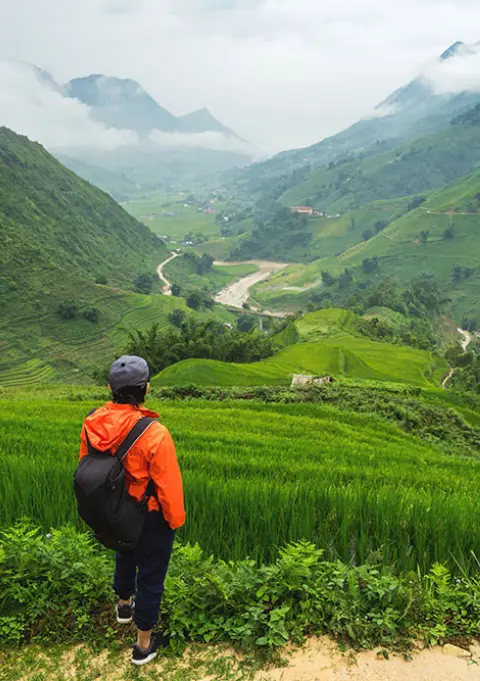
- 4 days 3 night experience
- Moderate to challenging
- Cultural immersion & active adventure
- Mountains, valleys, rice fields & villages
- Private tours – Less Touristic
- Vegan-friendly
What to do in Sapa? Where to go in Sapa?
And, What to see in the journey of Sapa valley trekking or Sapa valley trek?
Below are some main points related to Sapa trekking routes recommended for travelers taking a Sapa trek tour or Sapa valley trekking. 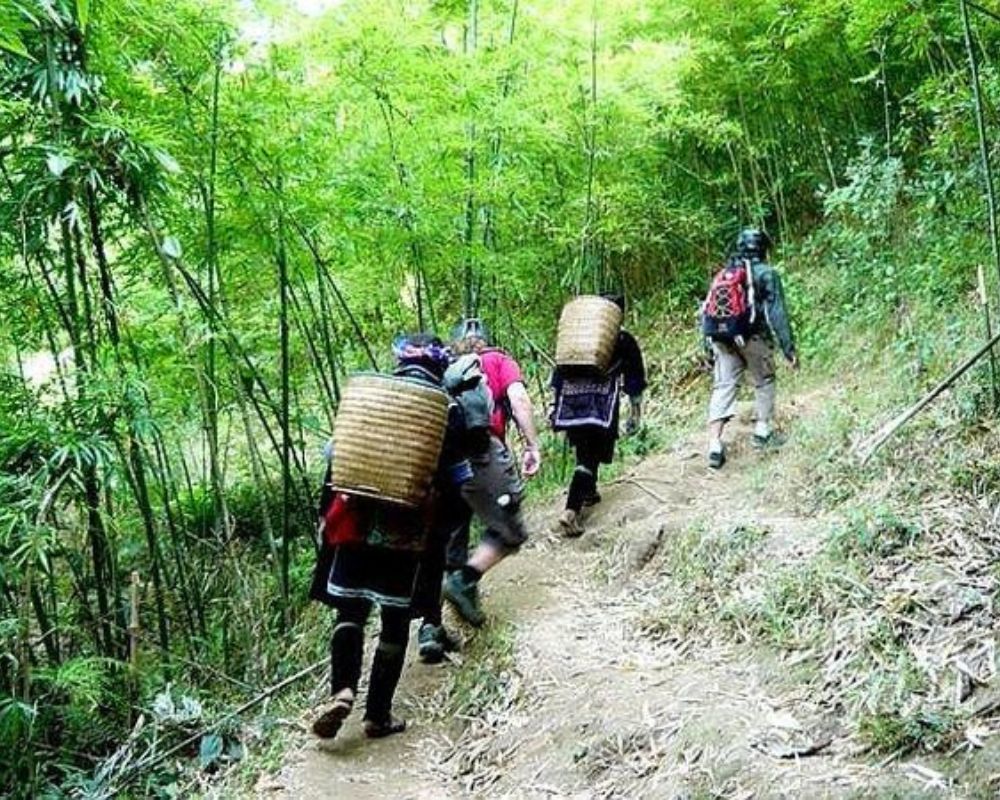
Source: Internet
What to do? Where to go?
And, What to see in the Itinerary of Sapa town – Cat Cat village – Sin Chai village: Unforgettable memories
– Itinerary: Sapa town – Cat Cat village – Sin Chai village – Sapa town
– Time: During the day
– Trekking distance: About 7km
– Level: Easy
From Cat Cat village, move in the direction of Muong Hoa valley about 3km through terraced fields to reach Sin Chai village. Unlike Cat Cat village, Sin Chai village has not been developed in terms of tourism, so it is still quite wild and few people know about it. Here travelers will have the opportunity to admire the traditional wooden houses built with Po mu wood. End of the day trekking in Sapa. This is considered the easiest trekking route and is very suitable for first-time trekkers.
What to do? Where to go?
And, What to see in the Itinerary of Sapa – Love Waterfall – Silver Waterfall – Y Linh Ho – Ta Van: Interesting experiences
• Itinerary: Tram Ton – Love Waterfall – Silver Waterfall – Cat Cat village – Y Linh Ho – Lao Chai – Ta Van – Sapa town.
• Time: 2 days 1 night
• Trekking distance: 20 – 30 km
• Level: Moderate
The travel schedule is as follows:
• Day 1: Sapa – Tram Ton – Love Waterfall – Silver Waterfall – Cat Cat Village (Homestay).
From Silver Waterfall, visitors go down Muong Hoa valley towards Sin Chai village – where the Black H’mong live. Here they will rest and have lunch then move to the Homestay. This is also where tourists will spend the night in a homestay.
• Day 2: Cat Cat village – Y Linh Ho – Lao Chai – Ta Van – Sapa town center.
The porter will show trekkers the way down the valley to the beautiful suspension bridge. Here they will see the Golden River and the waterfall from afar. Continue trekking up the hill and visit the ripe rice fields of Y Linh Ho village, Lao Chai.
In the afternoon, continue trekking to Ta Van village – the village of the Mong, Red Dao and Giay ethnic groups.
What to do? Where to go?
And, What to see in the Itinerary of Sapa town – Ta Phin village – Ta Giang Phin – Sapa: Unprecedented valuable experiences
• Itinerary: Sapa – Suoi Ho – Ma Tra village – Ta Phin – Phin Ho – Lu Khau – Suoi Thau – Kim Ngan – Ta Giang Phinh – Sapa
• Time: 3 days 2 nights
• Trekking distance: 43km
• Level: Hard
The travel schedule is as follows:
The travel schedule is as follows:
• Day 1: Sapa to Ma Tra first, then, Ta Phin (Distance about 14 km)
On the way, trekkers will see the picturesque terraced fields.
• Day 2: Ta Phin to Phin Ho. Then, from Lu Khau to Suoi Ho and Suoi Thau (Distance about 17km)
Go through hills, valleys, forests and rice terraces. Then continue downhill through the rice fields to reach Lu Khau village – this is where the Red Dao and H’mong live. Don’t miss the chance to visit the salmon farm!
• Day 3: Suoi Thau – Kim Ngan – Ta Giang Phinh – Sapa (12 km)
Travelers will take a tour around the Suoi Thau area – where they will witness the daily life of the Red Dao people. After this village, trekkers will come to Gia Thau village to admire the terraced fields. Ta Giang Phinh village takes about 1 hour. Here, tourists will visit the house of a green H’mong to learn about the differences of their customs and traditional costumes from the Red Dao and the Black H’mong.
Sapa 1 Day Tours

- 1 day experience
- Moderate to challenging
- Cultural immersion & active adventure
- Rice fields, valleys & villages
- Private tours
- Vegan-friendly
Sapa 2 Day Tours

- 2 days 1 night experience
- Moderate to challenging
- Cultural immersion & active adventure
- Mountains, valleys, rice fields and villages
- Private tours
- Vegan-friendly
Sapa 3 Day Tours

- 3 days 2 night experience
- Moderate to challenging
- Cultural immersion & active adventure
- Mountains, valley, rice fields & villages
- Private tours
- Vegan-friendly
Sapa 4 Day Tours

- 4 days 3 night experience
- Moderate to challenging
- Cultural immersion & active adventure
- Mountains, valleys, rice fields & villages
- Private tours – Less Touristic
- Vegan-friendly
What to do? Where to go?
And, What to see when conquering Fansipan peak: Beautiful memories of conquering the roof of Indochina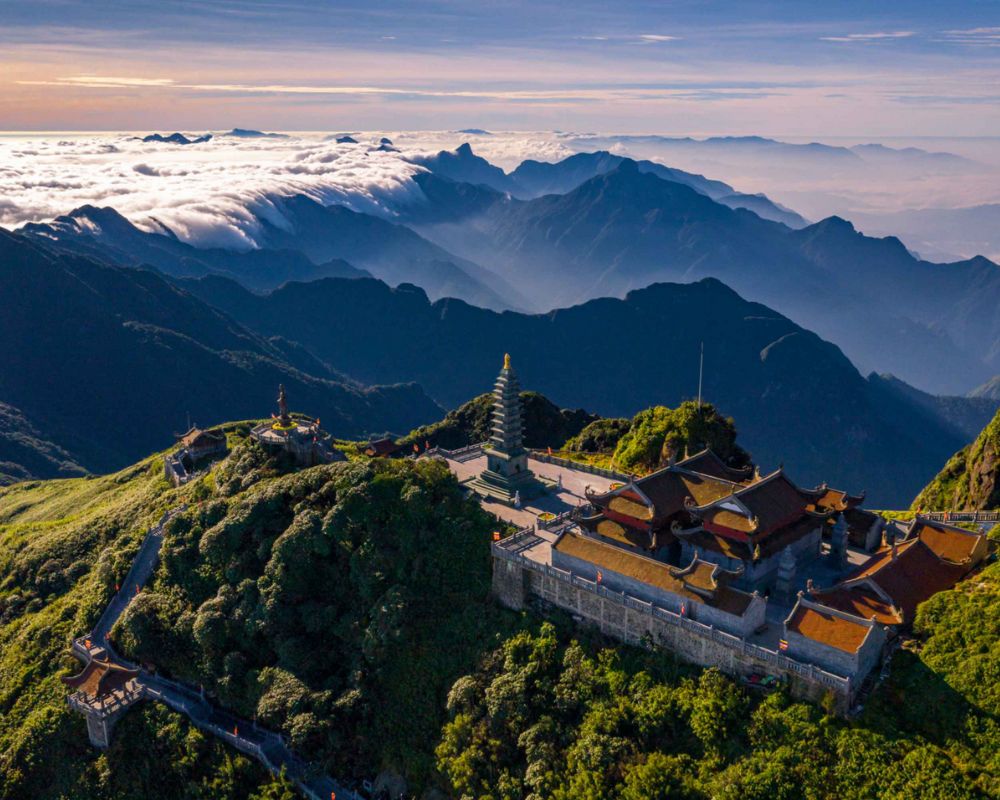
Source: Internet
• Itinerary: Sapa – Tram Ton pass – 2800m break point – Fansipan peak – Sapa
• Time: 2 days 1 night
• Trekking distance: 11.2km
• Level: Hard
The travel schedule is as follows:
• Day 1: Sapa center – Tram Ton pass – rest point 2800m
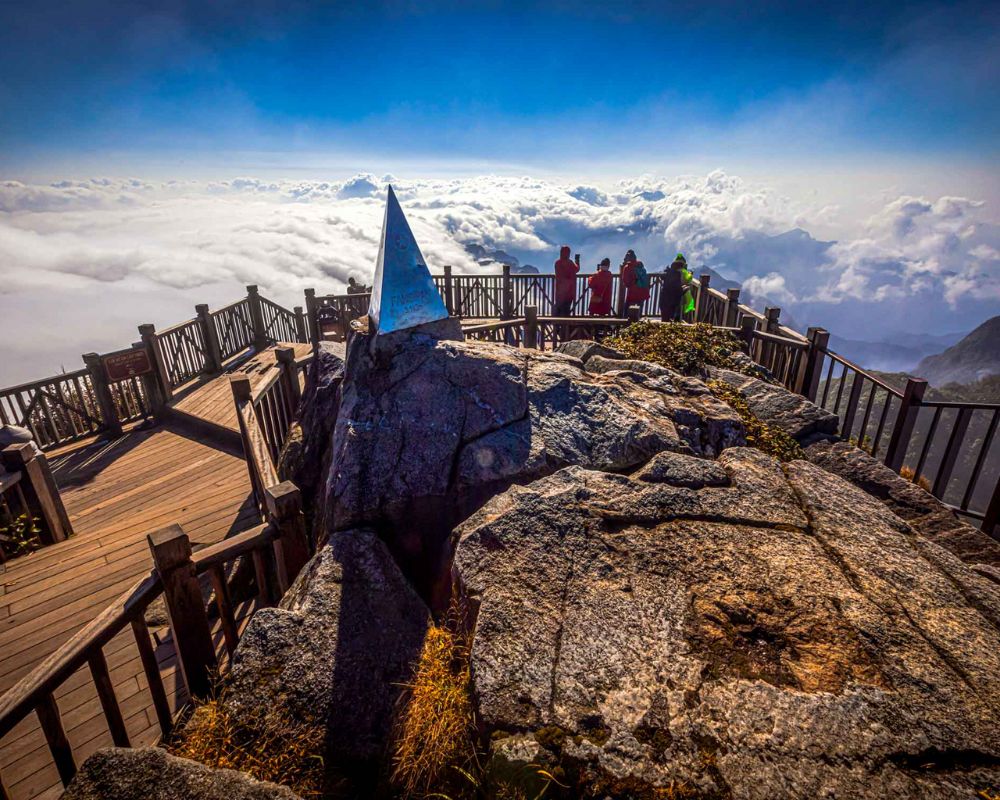
Source: Internet
The way from Tram Ton pass to climb Fansipan mountain, trekkers will be able to see the beautiful scenery of the Northwest mountains! However, because the road is quite difficult and often lost, you should choose to go on the Fansipan tour. If visitors go on beautiful weather, they will be able to see the beautiful sunset halfway up the mountain. It’s usually very cold here at night, so don’t forget to prepare warm clothes, gloves, and thermal patches!
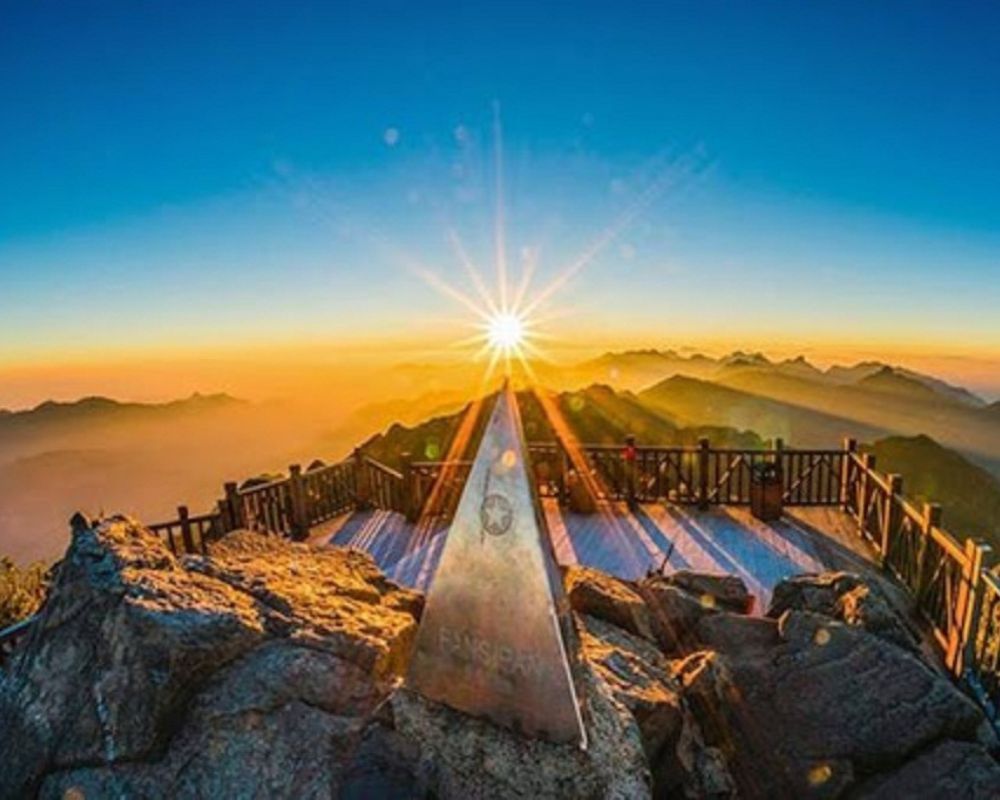
Source: Internet
• Day 2: Rest point 2800m – Fansipan peak – Sapa center.
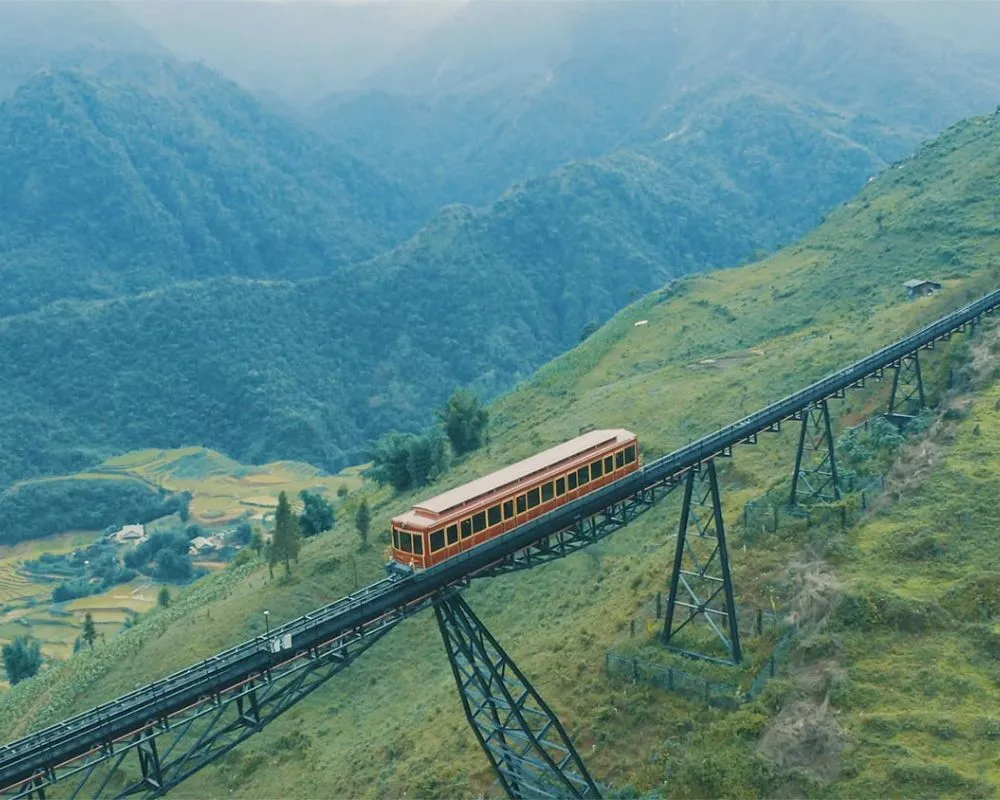
Source: Internet
Fansipan Hiking 1 Day
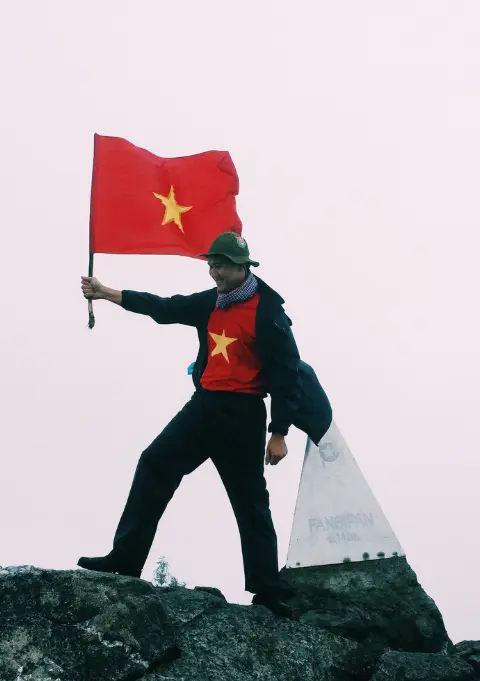
- 1 day fansipan experience
- Moderate to challenging
- Cultural immersion & active adventure
- Visit Fansipan, highest mountain of Indochina
- Private tours
- Vegan-friendly
Fansipan Trekking 2 Days
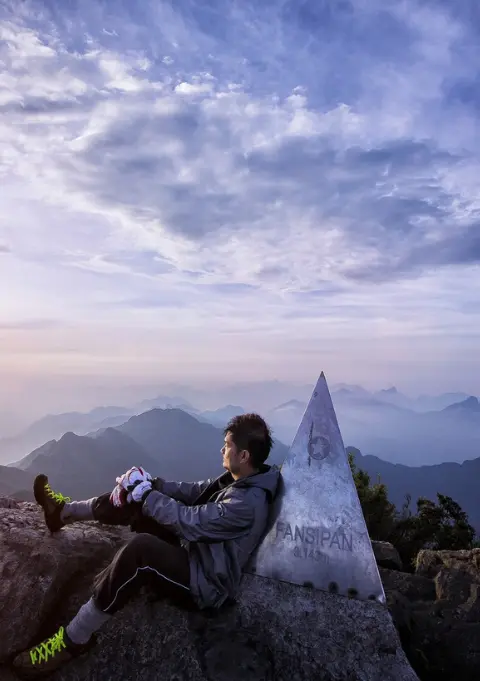
- 2 days 1 night fansipan experience
- Moderate to challenging
- Cultural immersion & active adventure
- Visit Fansipan, highest mountain of Indochina
- Private tours
- Vegan-friendly
Buy Cable Ticket Online
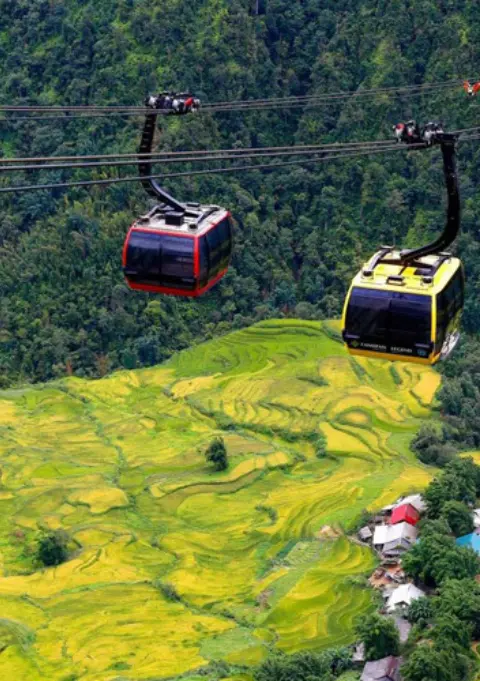
- [QR Code] Buy Fansipan Cable Car Tickets Online
- Non-refundable
- Present your e-voucher
- Fixed-day ticket
- Admission with voucher
Besides trekking, hiking is quite similar to this type of tourism. So what is hiking?
Hiking is an outdoor recreation or picnic activity. In the English sense, Go Hiking is hiking or hiking through trails or available roads.
Hiking and Trekking are both types of discovery tourism for adventurers. These are all activities of hiking, climbing, going to uninhabited places to explore nature. However, the key difference that distinguishes these two types is the route of discovery. If trekking is done on jagged, difficult terrain such as hills, forest roads, Hiking will go on available trails, even asphalt roads, built roads.
The intensity of both types is very different. While the place of trekking is almost completely new, it takes on more challenges and few people have ever explored it. Trekkers will have to use navigation equipment, prepare all the necessary gear and survival skills because they are moving to unfamiliar areas, the terrain is not clear.
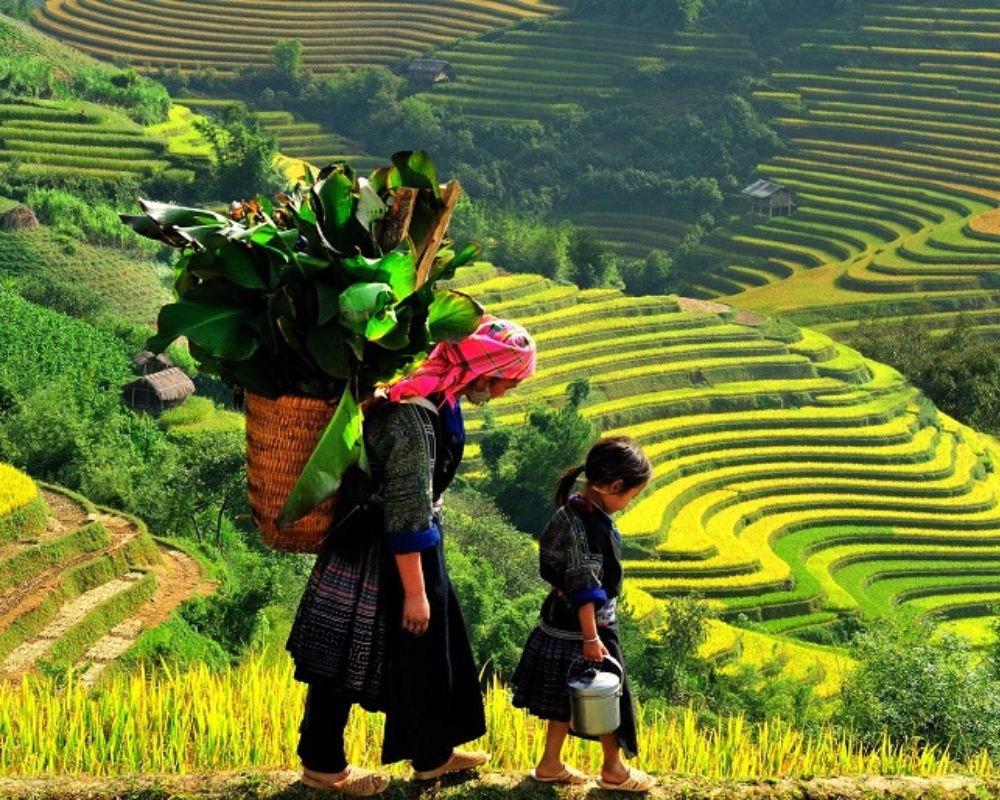
Source: Internet
Of course, as trekking can encounter rough and jagged roads, trekkers need to have professional skills such as orientation and positioning skills to find the suitable way. Moreover, they need specialized equipment to handle difficult roads. In order to find the way, trekkers often have to use a compass, they must have a first aid kit and have learned survival skills ready before the trip.
In contrast, hikers will walk on predetermined, less dangerous paths and do not move into places with unclear terrain. Hiking will usually be done on an existing terrain such as a trail, asphalt where there are quite a few people who have participated or chosen this terrain before. Hiking does not require too many skills because the difficulty of the terrain is not high, but trekking is the opposite. In general, hiking is somewhat gentler and less dangerous than trekking. If you are a beginner to hiking, choose hiking to familiarize yourself first.
Depending on the specific activity, the equipment carried is also different. With Trekking, it is common to use items with better durability. However, regardless of the type, it also requires health as well as certain skills, especially the courage and perseverance of the participants. Both hiking and trekking need to prepare specialized safety tools and equipment carefully.
How do you prepare for hiking and trekking?
Many dangerous areas are also chosen for trekking, so trekkers need to prepare all the necessary tools before starting. Let’s continue getting Sapa trekking tips!
Sapa trekking tips
To prepare for the trekking trip, trekkers/ hikers will need to equip a lot of different specialized equipment for possible cases. Even though they are a beginner or have gone trekking many times, preparation is still the most important factor that trekkers/ hikers cannot ignore below experience for trekking that anyone should know before taking a promising trekking trip.
Firstly, trekking requires trekkers to have good health. They should prepare health to be able to move throughout the distance they have outlined. Whether it’s trekking or hiking, these are still types of adventure that require health and certain skills to conquer impressive roads and have the courage to live in the middle of nature.
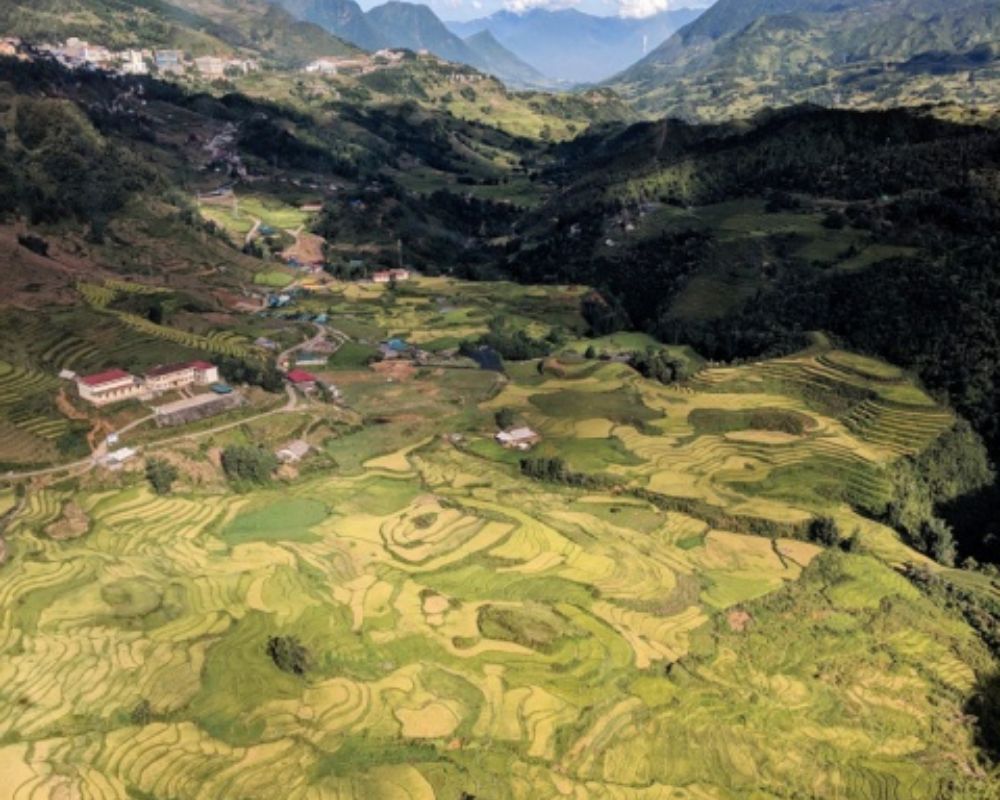
Source: Internet
Secondly, trekking often needs equipment with endurance, mastery skills, knowing how to find or set up a resting place, shelter. Trekking often requires using maps maturely, GPS, equipment and good navigation skills, a medical first aid kit for emergency use and survival skills that need to be prepared in advance for a trip because trekking is done on many complex terrain surfaces. That requires many adventurous challenges and different skills from trekkers.
1. Prepare a map and compass when trekking in Sapa:
In the middle of the wilderness with many trees, it will be difficult for trekkers to determine the direction. This is dangerous if they get lost. Therefore, the compass and map will be a must-have item to help them determine the direction appropriately. So, please keep in mind to bring a Sapa trekking map for the journey.
2. Prepare Sapa trekking shoes for the trip:
Because it is mountainous terrain and quite dangerous and slippery in trekking Sapa. Therefore, it is important to prepare a good pair of shoes to ensure perfect waterproofing and softness. Especially equipped with rubber soles combined with shoe spikes to help trekkers move more easily and wearing soft comfortable shoes will feel extremely convenient for a long journey.
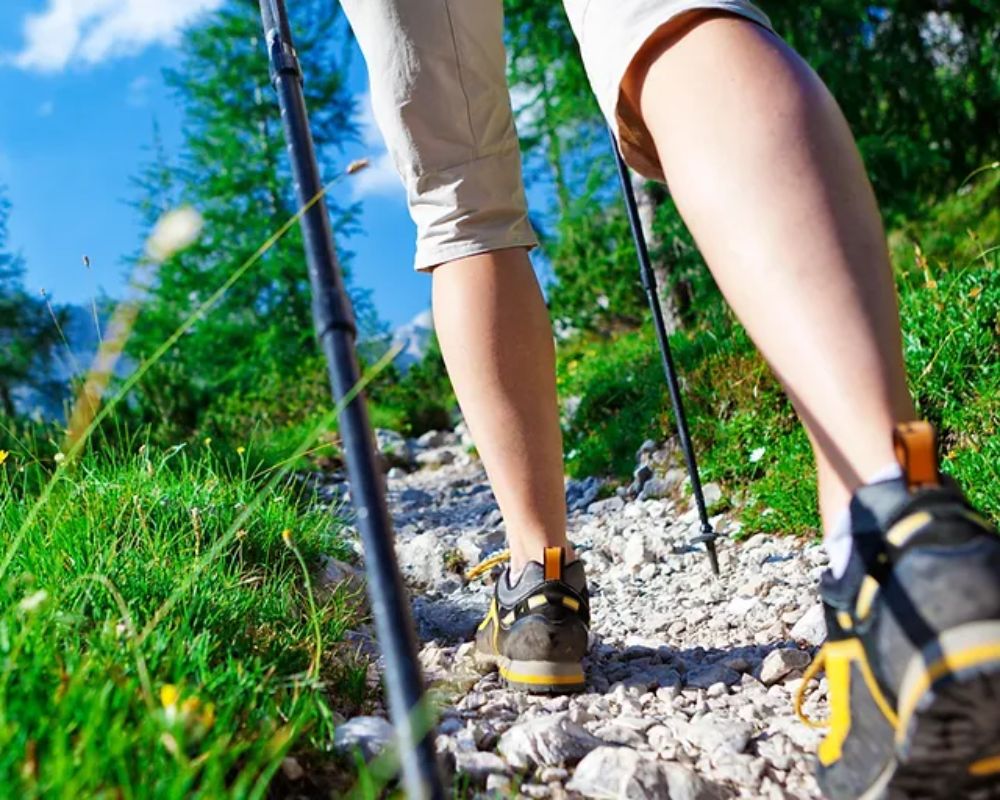
Source: Internet
3. Medical equipment for trekking Sapa Vietnam:
Surely trekkers can not know when going on trekking tours, especially those with many dangers will have many difficulties or problems that they could not have foreseen. Unfortunately, being bitten by insects or mosquitoes or even falling, … are all possible situations while moving. Therefore, trekkers should prepare enough medical equipment to ensure the health of themselves and other members of the group.No matter how experienced you are, you cannot guarantee that you will be safe from the beginning to the end. Therefore, be sure to prepare tools such as bandages, wound washes, antiseptics for open wounds, insect repellents, …
- Specialized knife when trekking: This is a forest knife that will help trekkers in many cases such as cutting firewood, clearing forest roads for easy walking, cooking,… They can prepare a large, sharp knife and a small, hand-held knife to sharpen,…
- Super bright flashlight for trekking: A super bright, well-functioning flashlight will help trekkers illuminate at night, when they can’t make a fire or when moving in the forest at night. Specialized backpacking flashlights will be highly recommended for trekkers in this case.
- Outdoor equipment: Tents, fire extinguishers, water containers, food, … When trekking, trekkers may have to sleep outside in case they have not reached the next milestone before dark. So, they need to prepare specialized camping gear so you can sleep and recharge before continuing.
- In addition, a sturdy backpack and a water bottle are also essential items to protect trekkers’ shoulders and provide enough water for an experience and meaningful journey .When preparing trekking gear, trekkers will have to prepare a lot of things. Therefore, they need a specialized picnic backpack that can hold large amounts of 10-20kg to be able to carry it comfortably when going to the forest.
4. Do not forget to pocket several notes below
This to make the trip safe and enjoyable pre-embarking on the journey of Sapa trekking tours:
- It is necessary to check the road map first to avoid getting lost or entering dangerous roads.
- Trekkers need to practice well before participating because trekking needs people with good physical strength and endurance.
- Prepare a phone with full battery and some backup chargers to be able to save great moments during your trip.
- In particular, trekkers should come to Sapa from March to May because this place is entering the dry season. The weather is very pleasant. It is less foggy and the road is also easier to move.
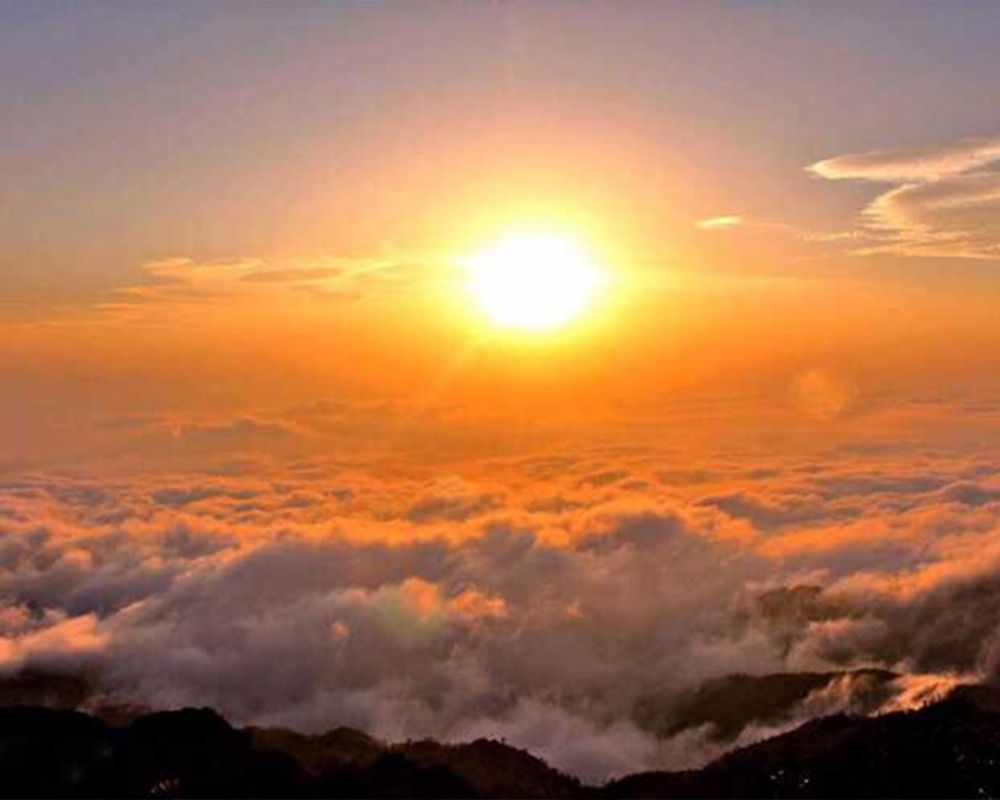
Source: Internet
5. Do not forget to pocket several notes below.
This to make the trip safe and enjoyable while embarking on the journey of Sapa trekking tours:
- It is recommended to go as a team of many people and keep a distance during the trekking journey to be able to support each other when needed. Absolutely do not separate the group to go separately, especially in the case of crossing streams and cliffs.
- When stopping to rest, trekkers should not remove their backpack, but use it as a fulcrum for them.
- Do not drink too much water because it can make sweat glands work harder and make the body more susceptible to dehydration.
- Any open part of the body must be applied with mosquito repellent cream to ensure health safety.
- When moving in the forest, it is necessary to step firmly on the feet to avoid slipping and falling.
- It is recommended to hew a dry stick as a stick to help trekkers create stability during the move.
- Trekkers should camp when it is still light, around 4 pm, the sun has begun to turn off.
- It is best to choose a camp location near a water source and prepare enough firewood to light a big fire and maintain the fire all night to keep warm and repel wild animals.
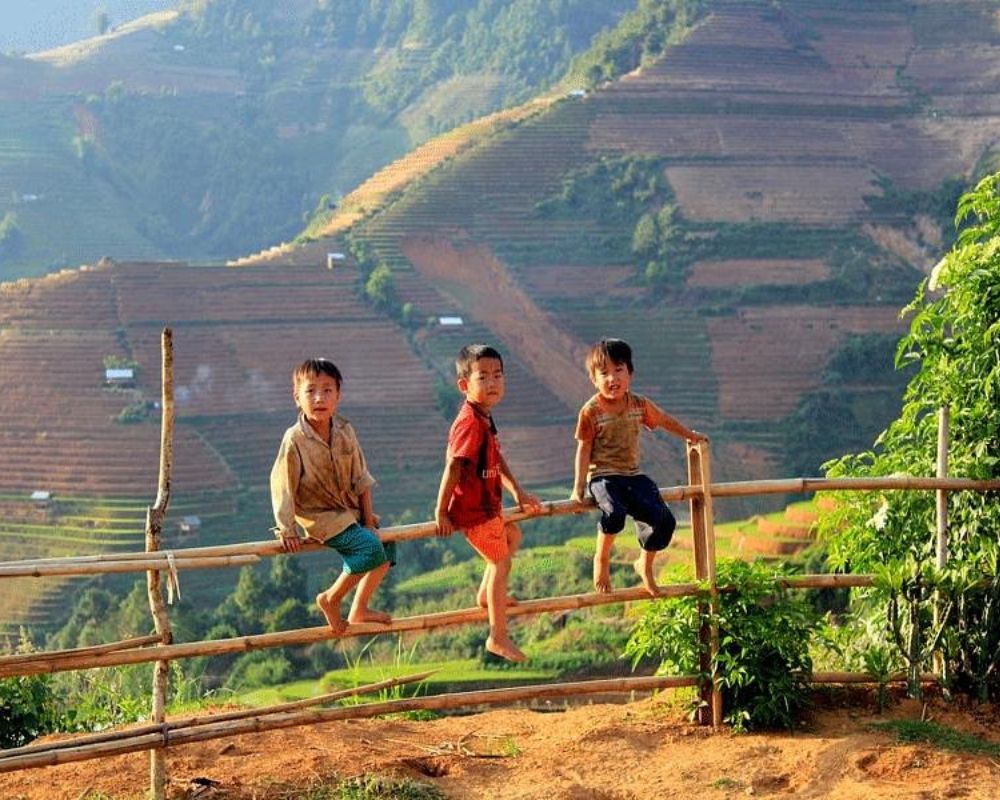
Source: Internet
Sapa 1 Day Tours

- 1 day experience
- Moderate to challenging
- Cultural immersion & active adventure
- Rice fields, valleys & villages
- Private tours
- Vegan-friendly
Sapa 2 Day Tours

- 2 days 1 night experience
- Moderate to challenging
- Cultural immersion & active adventure
- Mountains, valleys, rice fields and villages
- Private tours
- Vegan-friendly
Sapa 3 Day Tours

- 3 days 2 night experience
- Moderate to challenging
- Cultural immersion & active adventure
- Mountains, valley, rice fields & villages
- Private tours
- Vegan-friendly
Sapa 4 Day Tours

- 4 days 3 night experience
- Moderate to challenging
- Cultural immersion & active adventure
- Mountains, valleys, rice fields & villages
- Private tours – Less Touristic
- Vegan-friendly
What to wear for Sapa Trekking?
After trekkers have the basic knowledge about what to prepare for trekking, they also need to pay attention to how to dress when trekking. These will be long journeys after each other, facing difficult terrain and harsh weather, so trekkers must prepare carefully before going.
From September to November is the best time to go trekking in Sapa: ripe rice season, beautiful cloud hunting opportunities, moderate cold weather and no rain. with the right temperatures, so, choosing clothes that are sweat-wicking, breathable, and quick-dry so trekkers can move around comfortably.
From January to March: The season of wild flowers blooms, with cold weather and many festivals taking place. Because the weather changes to being cold, trekkers should choose warm clothes to protect their body from the weather.
In addition, in the summer months (from May to August) is considered the rainy season in Sapa. Therefore, the road is often very slippery, making it difficult and dangerous during trekking. So, travelers should choose effective waterproof clothing, thermal vests, tights, … to protect their body from the weather and avoid contact with the cold weather, heavy rain, high humidity.
Benefits of trekking and hiking in Sapa
- Becoming a trekker or a professional trekking person, they will be able to exercise to be healthy and their body is always in a state of flexibility.
- The process of trekking is different from an original trip. Trekkers will be visiting more destinations, beyond the tourist business areas, so the experience will be very different and unique.
- If normal traveling, travelers will enjoy the feeling of being cared for and relaxed from the beginning to the end, but with trekking, trekkers will have to prepare their own belongings, move themselves, solve their problems like they are participating in a game. Survival seeking, trekkers have to solve problems by themselves with limited help.
- During the trekking process, trekkers will face many different situations and challenges because weather incidents and other circumstances will also occur to help you have unforgettable experiences.
- The feeling of completing a trekking trip will make trekkers feel extremely satisfied, proud of themselves and motivate them to overcome challenges in the future. That is why many people choose trekking as a must-try activity between modern life and stress.
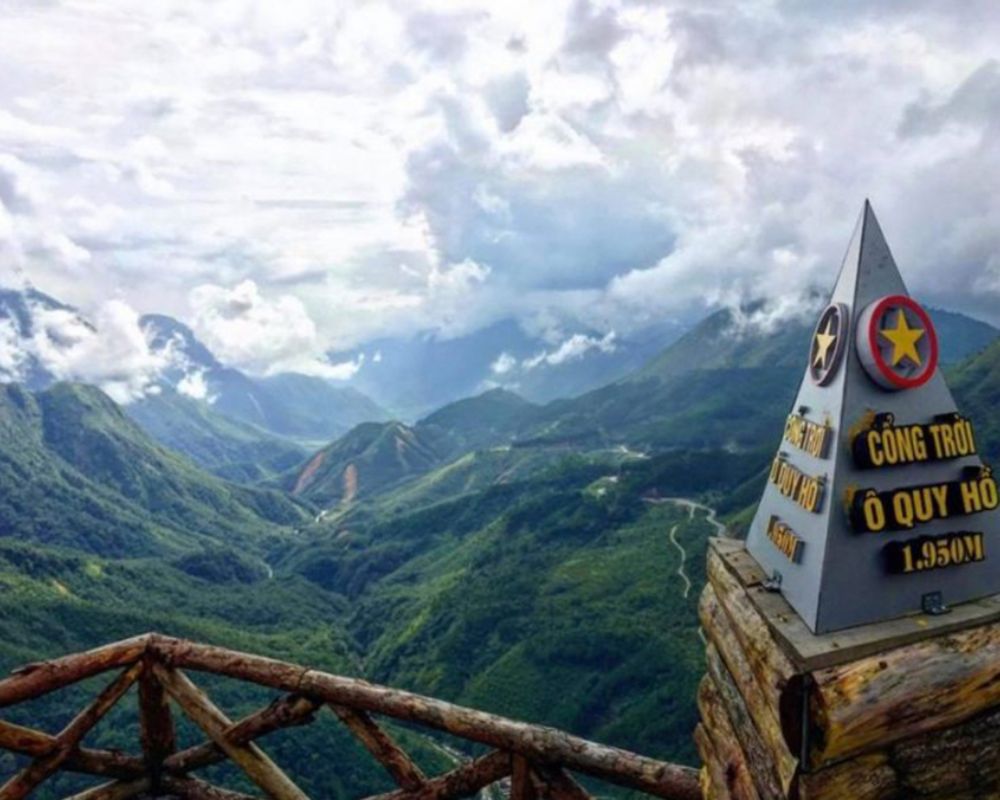
Source: Internet
Sapa trekking package or Sapa day trek
Can fit with those who want to get more experiences and unwind their minds.
As you may know, the best time to visit Sapa is from March to May when the landscape turns green as the warmer months roll in. In addition, from September to November, the rice fields turn golden yellow when they are ready to be harvested. The weather at this time of year is starting to get cooler, but nice hiking weather is still around that time. 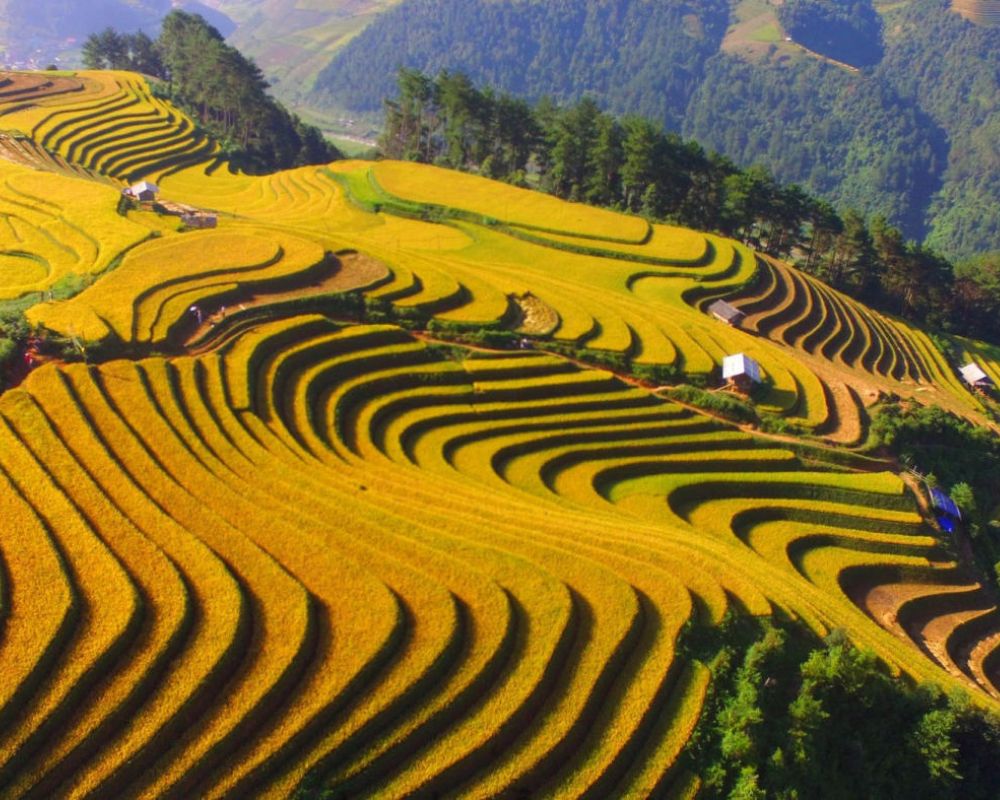
Source: Internet
Sapa trekking without a guide?
Some people wonder is it possible to sapa trekking without a guide? or Do travelers need a guide for Sapa Vietnam trekking?
Well, a guide is recommended. The guides here are mostly locals, so they know everything about Sapa, every small road, every rice field, and every forest. In many ways, the guide can take trekkers to remote locations which are not on the map and from major walking paths through fields and forests. Trekkers will feel better and more comfortable when the guide clearly shows them where to eat and where to stay if they have a multi-day trip.
If someone still wants a real adventure, they can also go Sapa trekking alone. Yet, before going, they need to research the routes that they will be walking to carefully. The easiest way to do this is trekking to villages where they can find accommodation to stay overnight like Cat Cat Village, Y Linh Ho or Ta Van. Make sure trekkers bring enough food and water for themselves because there will be no stores if they unfortunately get lost. In addition, with small one-day trekking trips, they do not need a guide. It is best to ask the hotel where they stay in Sapa for advice on the best and most convenient trekking for them.
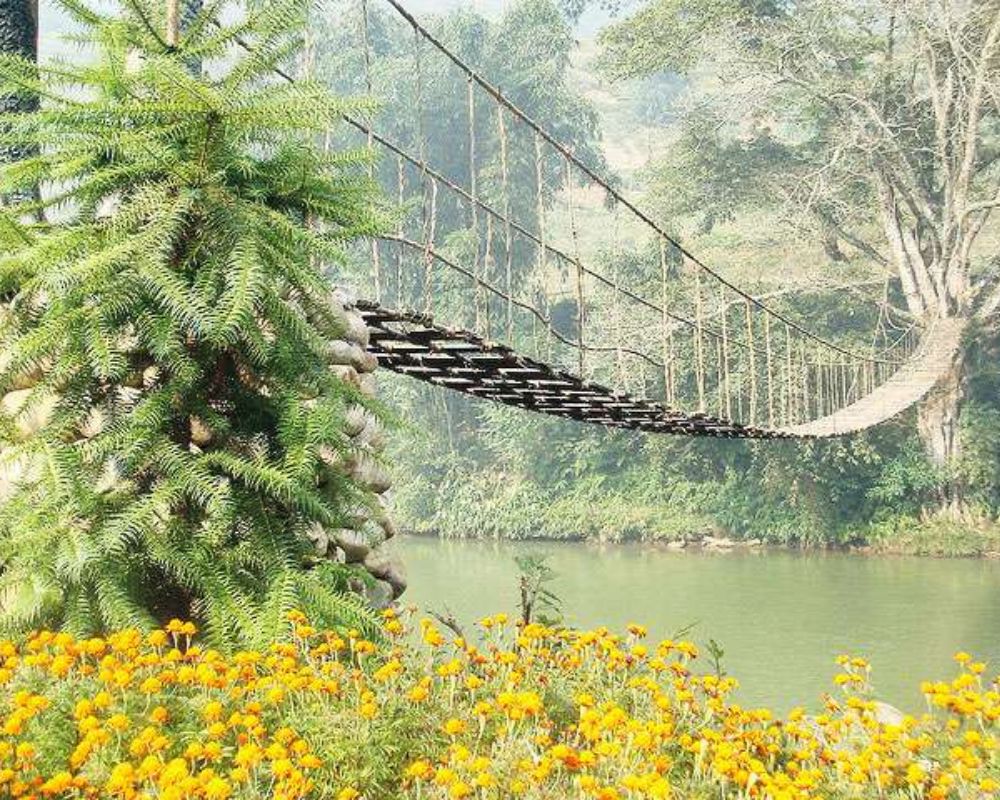
Source: Internet
Sapa trekking tours from Hanoi
If the trip does not start from Hanoi but in Sapa, travelers must go to Sapa by themselves.
Trekking tours or trekking activities are not like other tourist activities, because this is an adventure sports tourism activity that is picky about players. Participating is quite hard, trekkers have to walk continuously, sometimes they may encounter the harsh weather and dangerous situations in life… So, trekkers should choose local people or porters who have good health, endurance, pine terrain, geomorphology, long-term forest experience, and clearly knows the terrain to guide them for Sapa trekking from Hanoi.
If travelers start their journeys from Hanoi, there are many different choices for them to have a Sapa trekking from Hanoi due to there being many tours by travel agents in Hanoi to Sapa. Travelers will select the best tours in Sapa and just need to specify whether they want to do a haft, one-day trekking or multi-day trekking. Please click here to get further tour Sapa trekking information.
Sapa day trek or Sapa trekking many days?
Trekking in Sapa tours can be for one day or up to three days or more. The four-day tour is usually the first day that travelers travel from Hanoi to Sapa, not a day of trekking. Therefore, make sure you check your itinerary properly.
If travelers just want to trek for a day, they will be able to see beautiful rice fields and indigenous villages. This is best if their stamina is not too good, they do not have enough time or at the end of the day tourists want to return to the hotel in the most pleasant way.
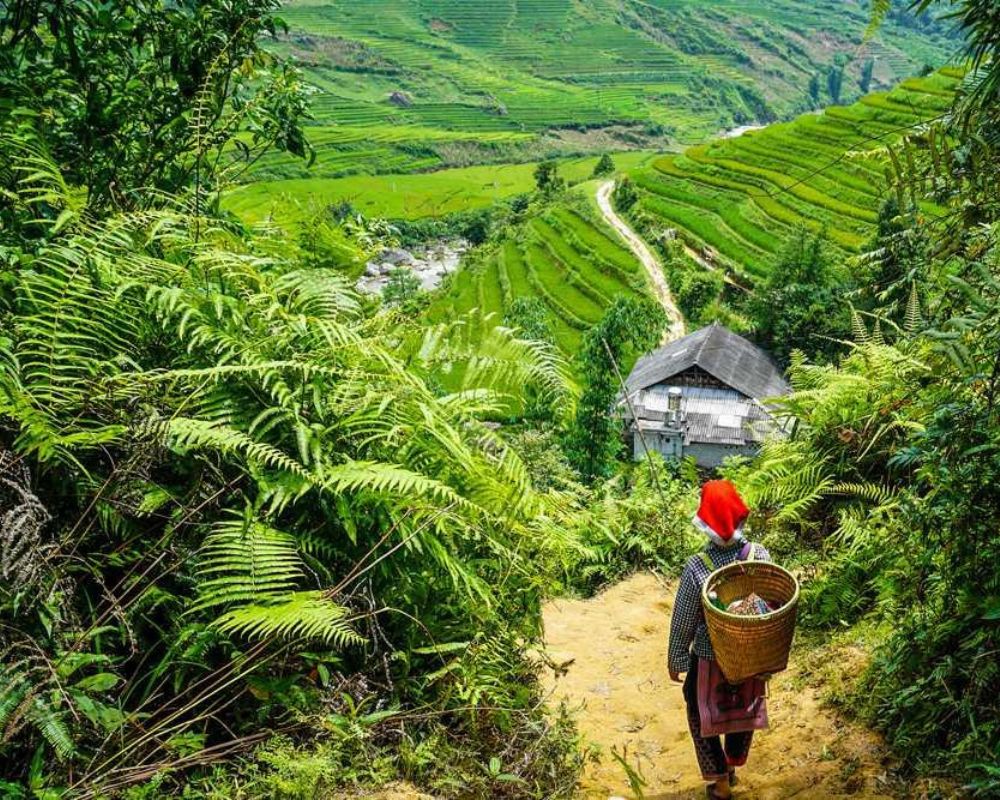
Source: Internet
Go two days and one night trekking for the best experience. The second day of trekking for many people is the best day because the scenery is getting more dramatic and they will meet fewer tourists. Besides the beautiful rice fields, travelers will stroll through the forest and visit remote villages. At the end of the day, visitors will stay in a local house to experience real life here.
Three-day trekking or more is for those who really love trekking because the landscape and experiences won’t change much. Of course trekkers will go further, will meet fewer tourists and will explore more things from nature.
Sapa 1 Day Tours

- 1 day experience
- Moderate to challenging
- Cultural immersion & active adventure
- Rice fields, valleys & villages
- Private tours
- Vegan-friendly
Sapa 2 Day Tours

- 2 days 1 night experience
- Moderate to challenging
- Cultural immersion & active adventure
- Mountains, valleys, rice fields and villages
- Private tours
- Vegan-friendly
Sapa 3 Day Tours

- 3 days 2 night experience
- Moderate to challenging
- Cultural immersion & active adventure
- Mountains, valley, rice fields & villages
- Private tours
- Vegan-friendly
Sapa 4 Day Tours

- 4 days 3 night experience
- Moderate to challenging
- Cultural immersion & active adventure
- Mountains, valleys, rice fields & villages
- Private tours – Less Touristic
- Vegan-friendly
Is sapa worth visiting?
Let’s read continuously to feel Sapa by yourself!
Here are some tour suggestions for travelers’ trekking/ hiking/ climbing and help them to know more about what to see in Sapa, what to do in Sapa and where to go in Sapa?
Fansipan mountain climbing tour: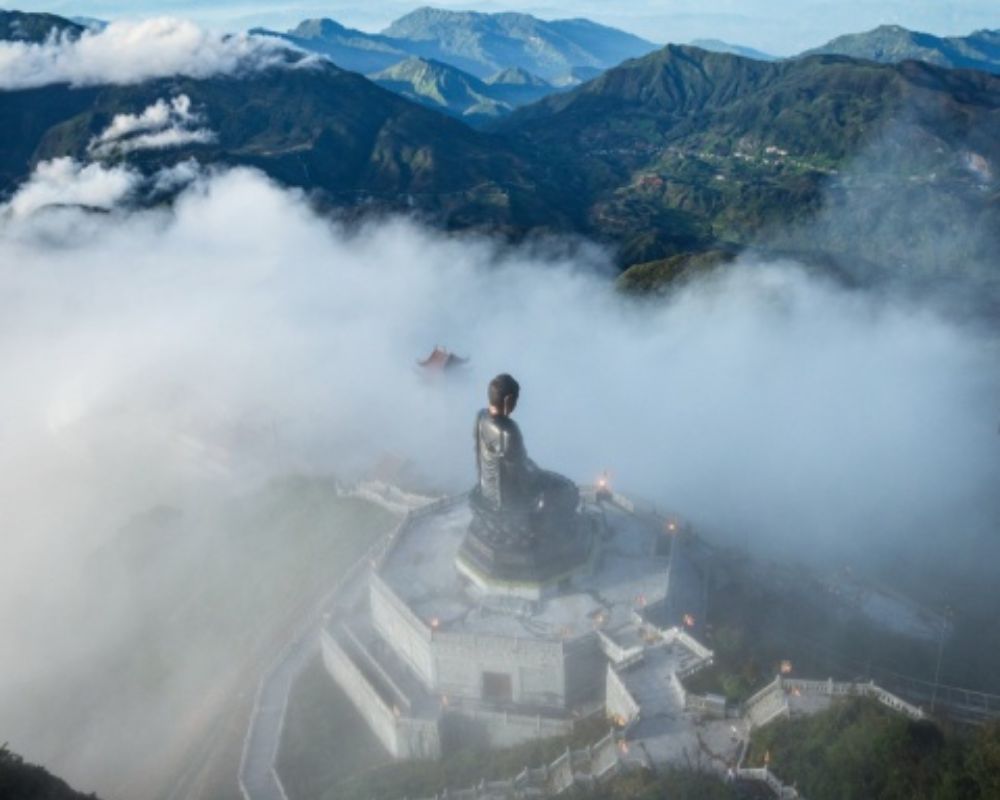
Source: Internet
Fansipan mountain climbing tour is a very popular trekking trip. Many people have done this in one day. At first, they don’t think so, they have to start very early and return by the end of the evening with all the time they will have to walk. Trekking two days and one night will be more comfortable and enjoyable. At night, travelers will sleep in the mountains in a hut. Three days or more days of trekking will take visitors to another path. And they certainly can’t go up without a guide. In fact. Some people still organize themselves but travelers should consider carefully to do this because there have been people missing and fatal accidents up there. Trekkers definitely need a guide!
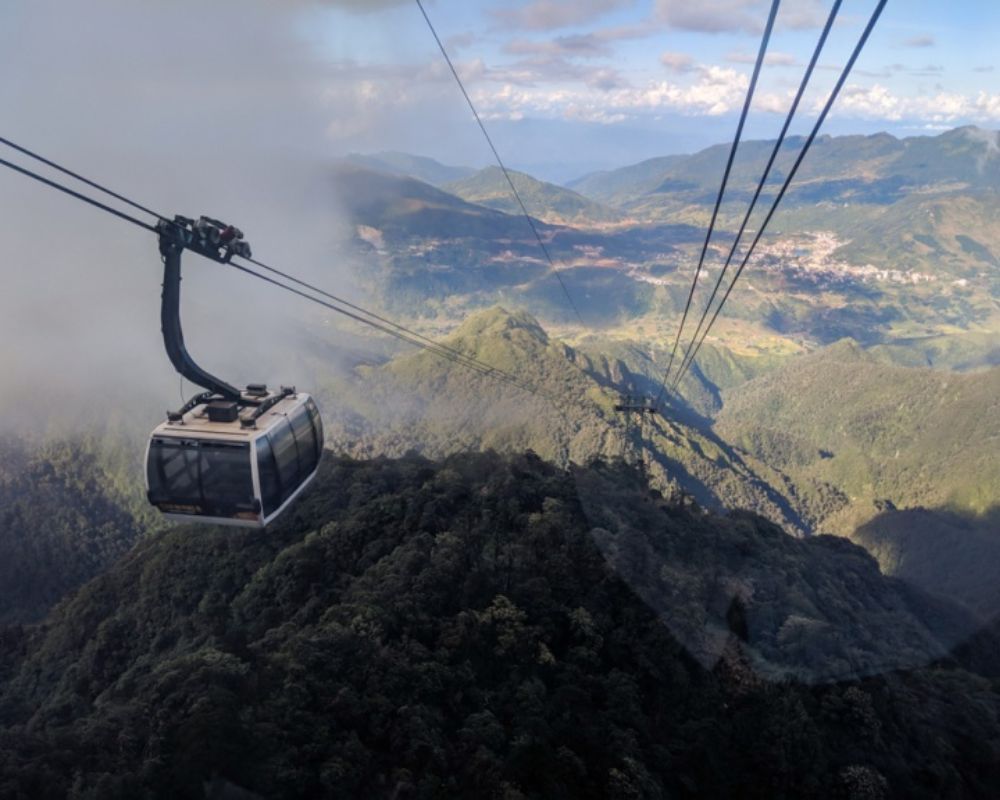
Source: Internet
If visitors come to Sapa in order to see the famous rice fields, it is better to do the normal Sapa trekking.
Experience with Homestay in Sapa once in life!
Homestay can be a great experience here, but it’s not right for everyone. A homestay experience means travelers stay overnight in a local’s home, which must be registered as a tourist activity. This means that the house must have a toilet, a bed with mosquito nets, and be clean and hygienic. However, don’t expect it to be a luxury room, it’s more than a hut. If visitors are traveling in a group, they can sleep in the same room. The owner of their homestay will serve dinner and breakfast. It is a very nice cultural experience and also supports local people to have extra income to improve their lives. Also, overnight trekking means travelers can get far away from Sapa and explore many areas with few tourists.
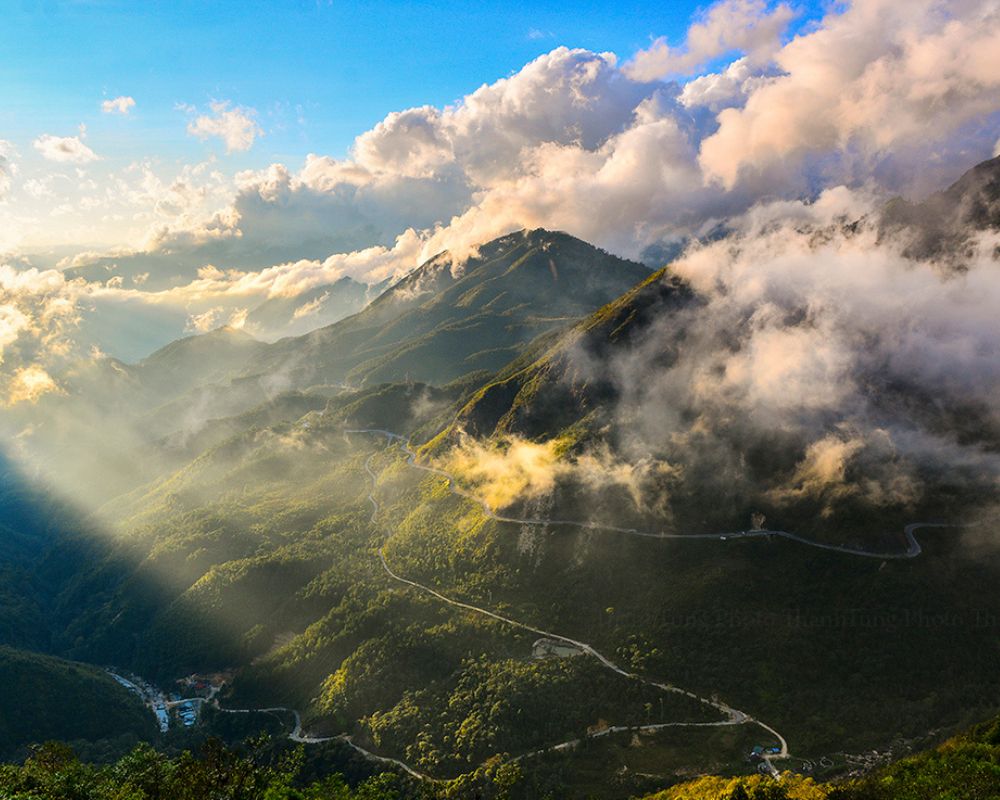
Source: Internet
Here are the closest and best places to hike in Sapa, with starting points in close order of each other.
Sapa Vietnam hiking tours with Sapa Valley Trail – 1.6 km
The Sapa Valley Trail is a must-visit for outdoor enthusiasts who want to see some of northern Vietnam’s most iconic landscapes. It takes about three hours to complete. Rated as a “moderate” hiking trail, the Sapa Valley Trail is ideal for those who enjoy scenic walks without having to worry about widening natural obstacles.
Highlights of this hike include sweeping views of the rice fields and the town. While this trek is not as demanding as the others, it is still imperative that you wear durable clothing and shoes. Much of this yard is paved, but can be slippery after rain. After this hike, some hikers choose to take a taxi back to their accommodation as it ends where it started in an area easily accessible by car.
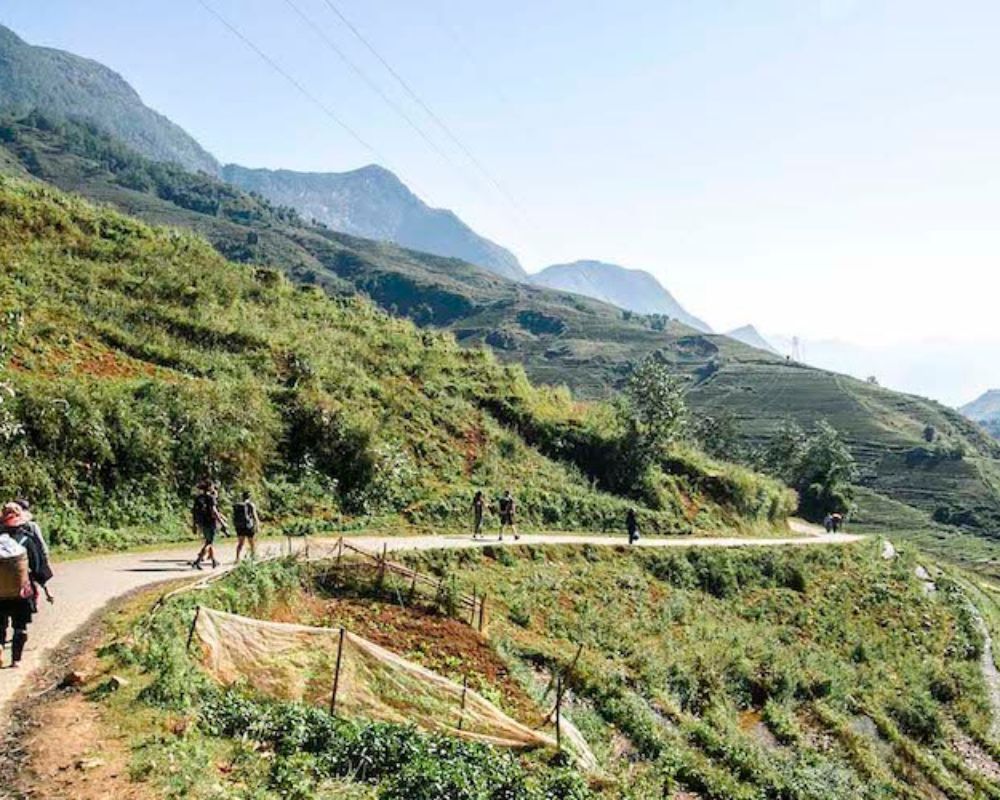
Source: Internet
Sapa hiking tours with Ban Cat Cat Detour – 2 km
This walking path around the quaint Cat Cat Village is perfect for a morning hike, extending only 4 km/ 2.6 miles forward and backward. The loop is rated as easy, ideal for people or families who want to spend time outdoors without doing anything extremely strenuous.
On this path, hikers will pass by waterfalls, bridges and village views. The least crowded days to do this trail are during the working week and you have to pay an entrance fee to enter the road.
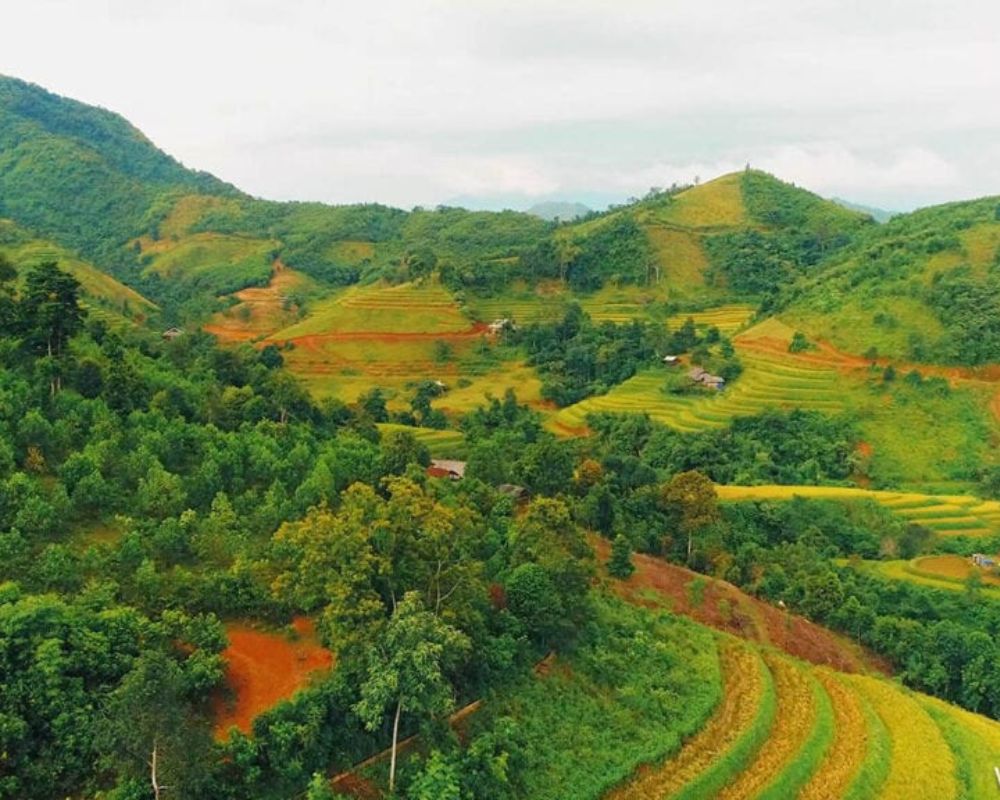
Source: Internet
Trekking in Sapa costs one day from $25 – $45/person
- 1 person: About $40 – $45/person.
- Group of 2-3 people: About $30 – $35/person.
- Group of 4-6 people: About $23 – $25/person.
Fares do not include train tickets from Hanoi to Sapa and vice versa. But travelers can contact the supplier in advance to arrange train tickets to suit tourists’ time.
If you need to book bus or tickets, please check it here for your best option.
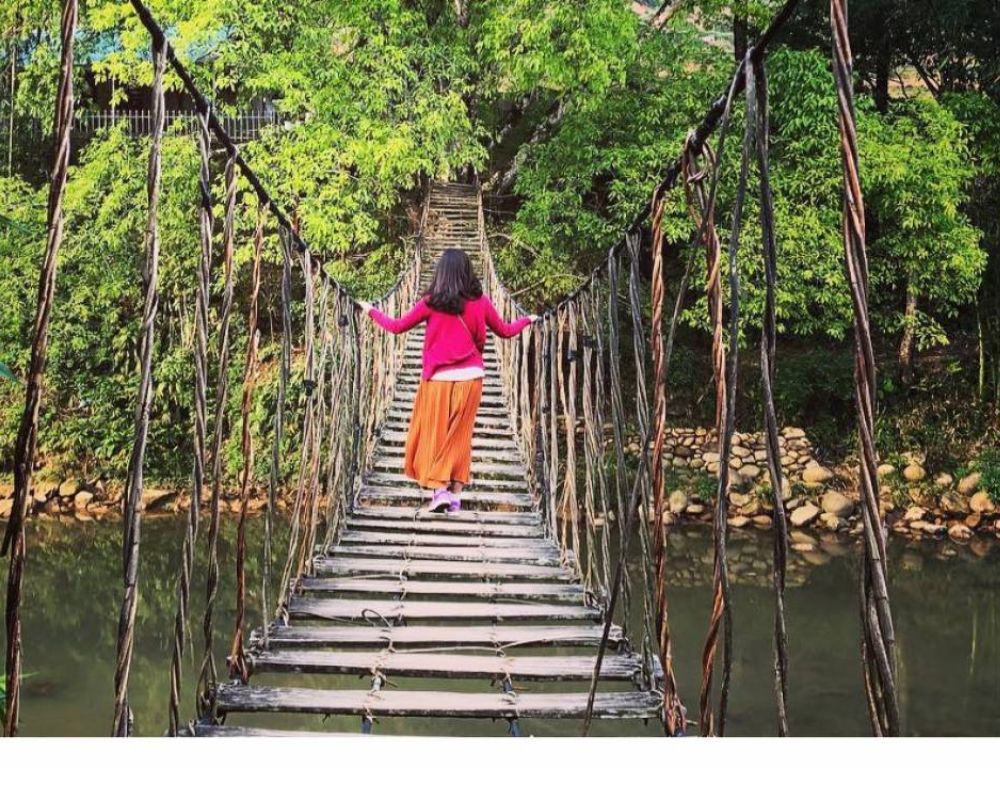
Source: Internet
Sapa trekking price for many days from 1,650,000 VND
Reference schedule such as: Mountain views and Muong Hoa valley – 2 days 1 night; Terraced rice fields and Homestay experience – 2 days 1 night; Sapa Hills – tribes and culture – 2 days 2 nights…
Cost of going to Sapa 2 days 1 night trekking:
- 1 person: About $75 – $80/person.
- Group of 2-3 people: About $65 – $73/person.
- Group of 4-6 people: About $55 – $63/person.
Especially Trekking Sapa tour for 3,4 days or more for those who really love trekking. The price of this Sapa tour is about $130 – $200/per person.
Visitors can travel and enjoy stunning scenery and remote beauty in Sapa without trekking.
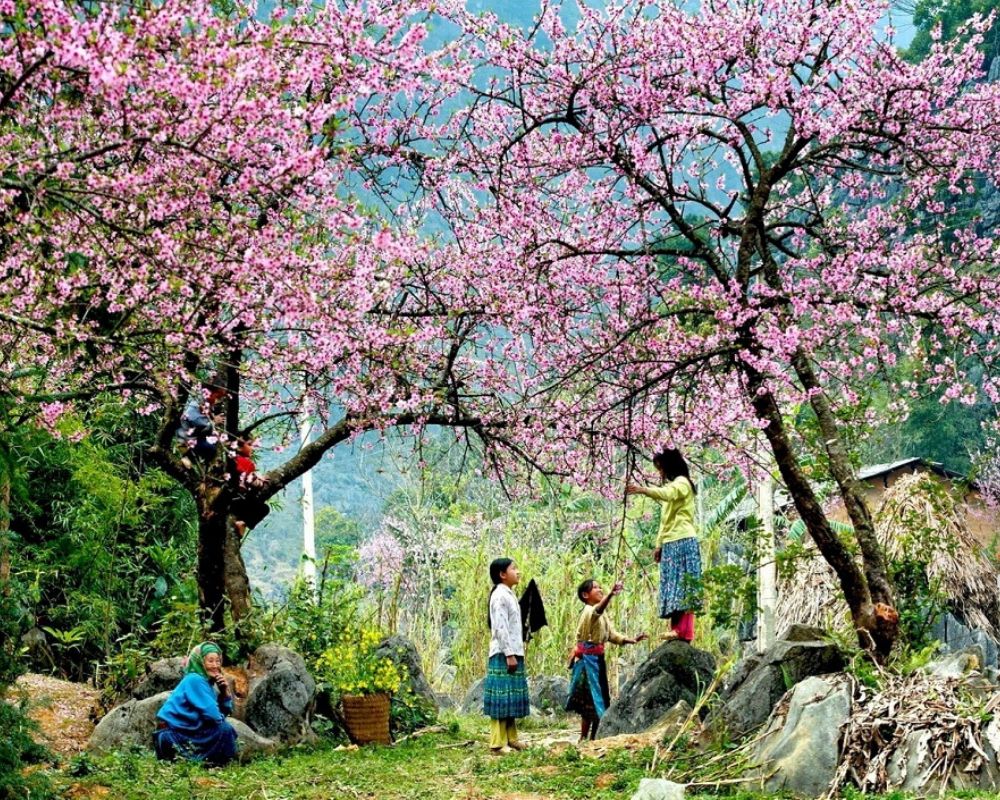
Source: Internet
Some visitors may ask if they can travel in Sapa without trekking/ hiking/ climbing or without a guide? The answer is Yes. This no-walk Sapa tour is designed for those who don’t want to do a lot of walking or can’t walk too much. Here are some suggestions.
- Highlights for Sapa travel without trekking as visit Sapa’s most famous villages by private car.
- See the unique landscapes of Sapa – Stay 1 night at a homestay and experience everything like a true local citizen.
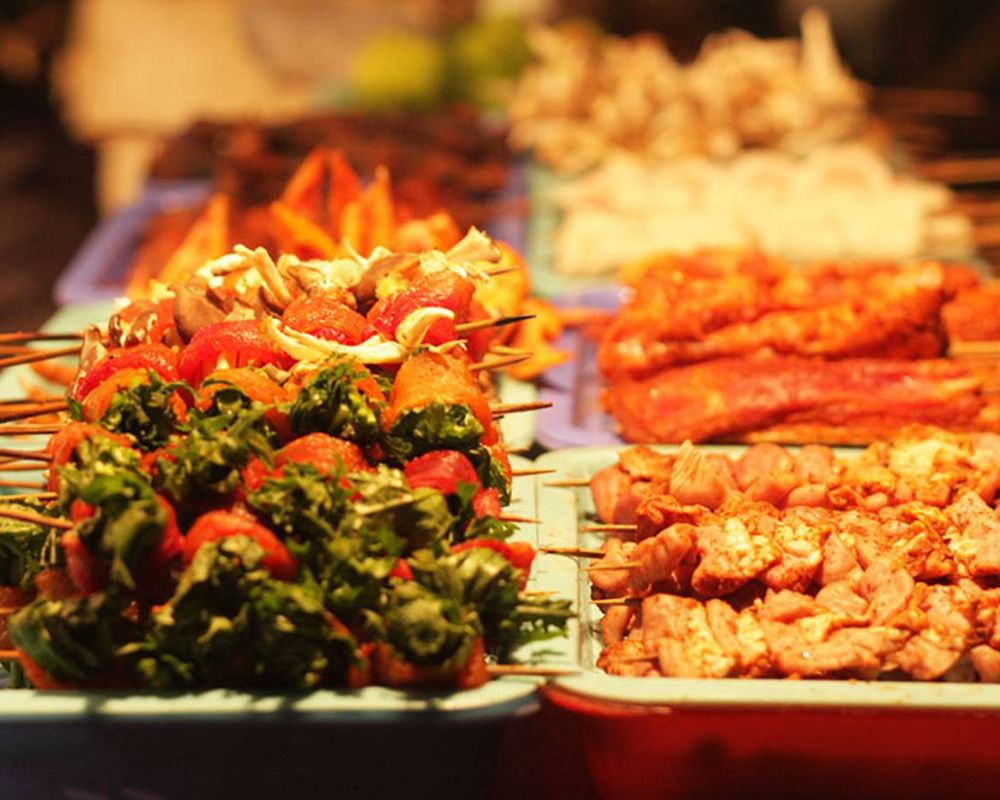
Source: Internet
- Try the best local food here such as Thang Co, Barbecue, Sturgeon, salmon hotpot, Black Chicken (Evil Chicken), Grilled stream fish, Pig steals armpit, Buffalo meat guarding Sapa’s kitchen, Sa Pa humiliation, Five-color sticky rice, cider, Stone sprouted vegetables, Tay Porridge, Pau Plau thick cake, “Pau po cu” cornbread, Menmen Sapa.
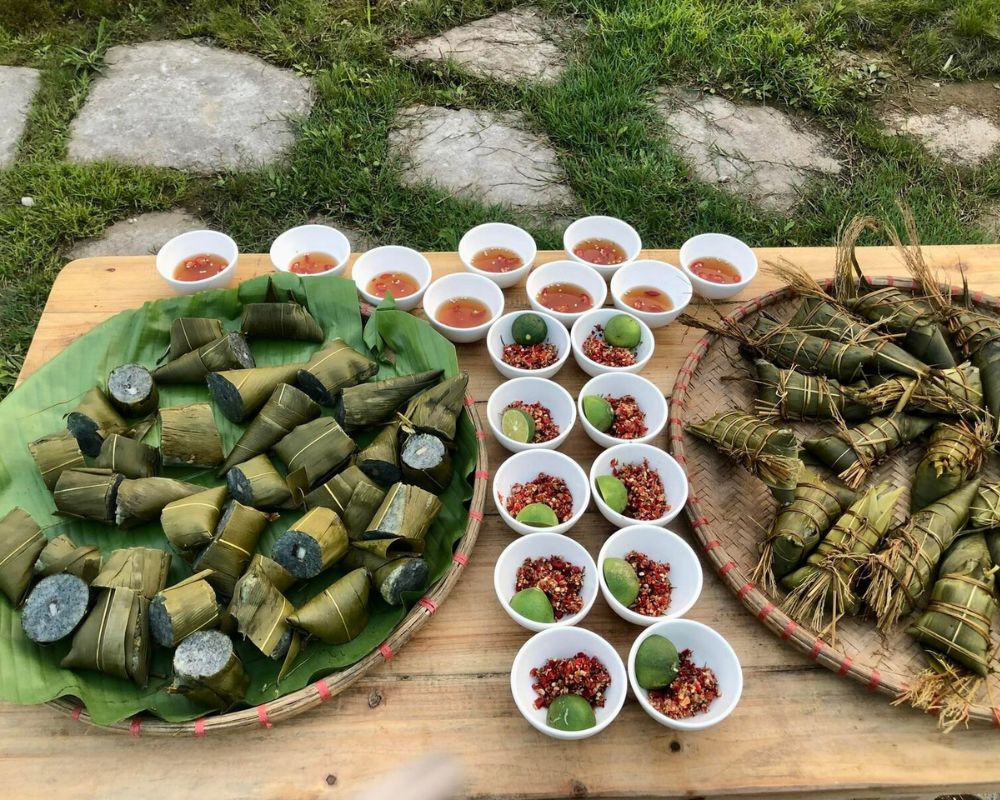
Source: Internet
- Furthermore, visitors may extend their stay in Sapa in order to enjoy a cool and pleasant atmosphere here.
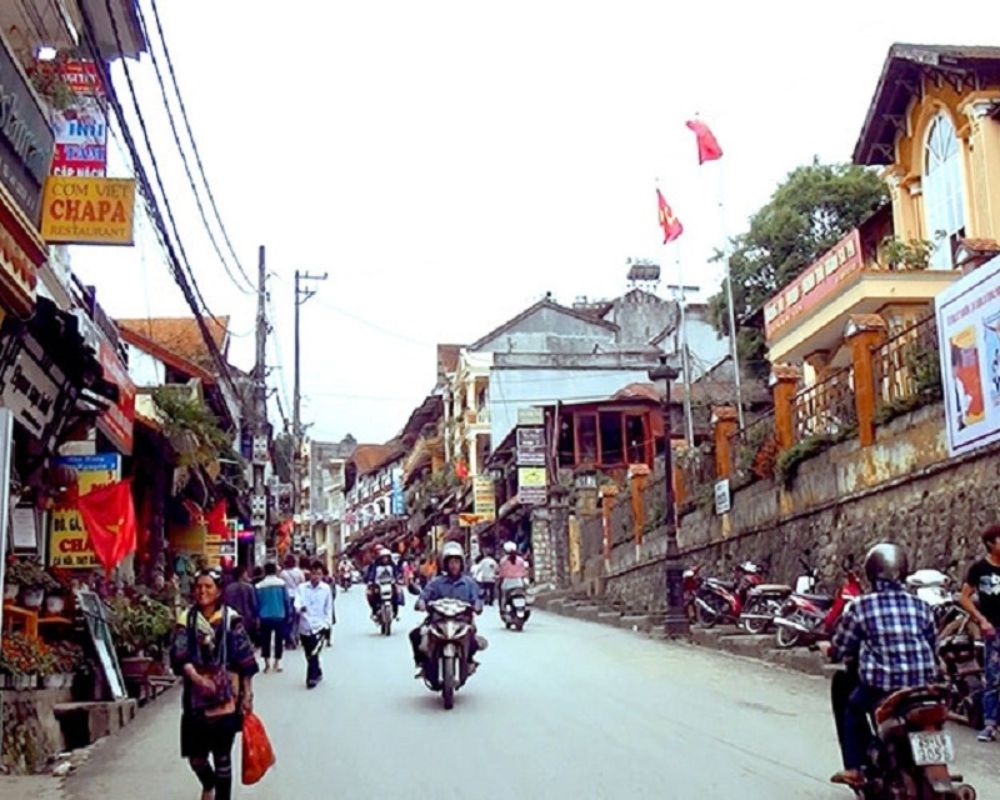
Source: Internet
Travelers can book all services in advance, and move to Hanoi at first. Then, all things will be handled by a travel agent quickly, efficiently and professionally. Click here for more useful information on the Hanoi-Sapa tour without trekking!
Sapa Trekking FAO?
1. Is it easy to choose a reputable, quality guide in Sapa?
Definitely yes. Many tour guides or local citizens work as tour guides in Sapa.
2. Should you choose locals or tours for Sapa Vietnam trekking?
Yes, you should. Because tour guides or local citizens who know and understand the terrain in Sapa, they easily give you useful recommendations and right directions for your trekking.
3. Is the living environment at the homestay in Sapa safe and clean?
Most homestays are quite clean to a certain extent. It also depends on location and cost.
4. Should you choose long-term trekking?
It depends on your time and health because long-term trekking needs travelers’ good health to pursue the journey seriously.
5. Is there a way to trek both economically and safely?
Maybe yes or no. This depends on your agent or tour guide’s reputation, but price also partly determines the quality.
Sapa 1 Day Tours

- 1 day experience
- Moderate to challenging
- Cultural immersion & active adventure
- Rice fields, valleys & villages
- Private tours
- Vegan-friendly
Sapa 2 Day Tours

- 2 days 1 night experience
- Moderate to challenging
- Cultural immersion & active adventure
- Mountains, valleys, rice fields and villages
- Private tours
- Vegan-friendly
Sapa 3 Day Tours

- 3 days 2 night experience
- Moderate to challenging
- Cultural immersion & active adventure
- Mountains, valley, rice fields & villages
- Private tours
- Vegan-friendly
Sapa 4 Day Tours

- 4 days 3 night experience
- Moderate to challenging
- Cultural immersion & active adventure
- Mountains, valleys, rice fields & villages
- Private tours – Less Touristic
- Vegan-friendly
